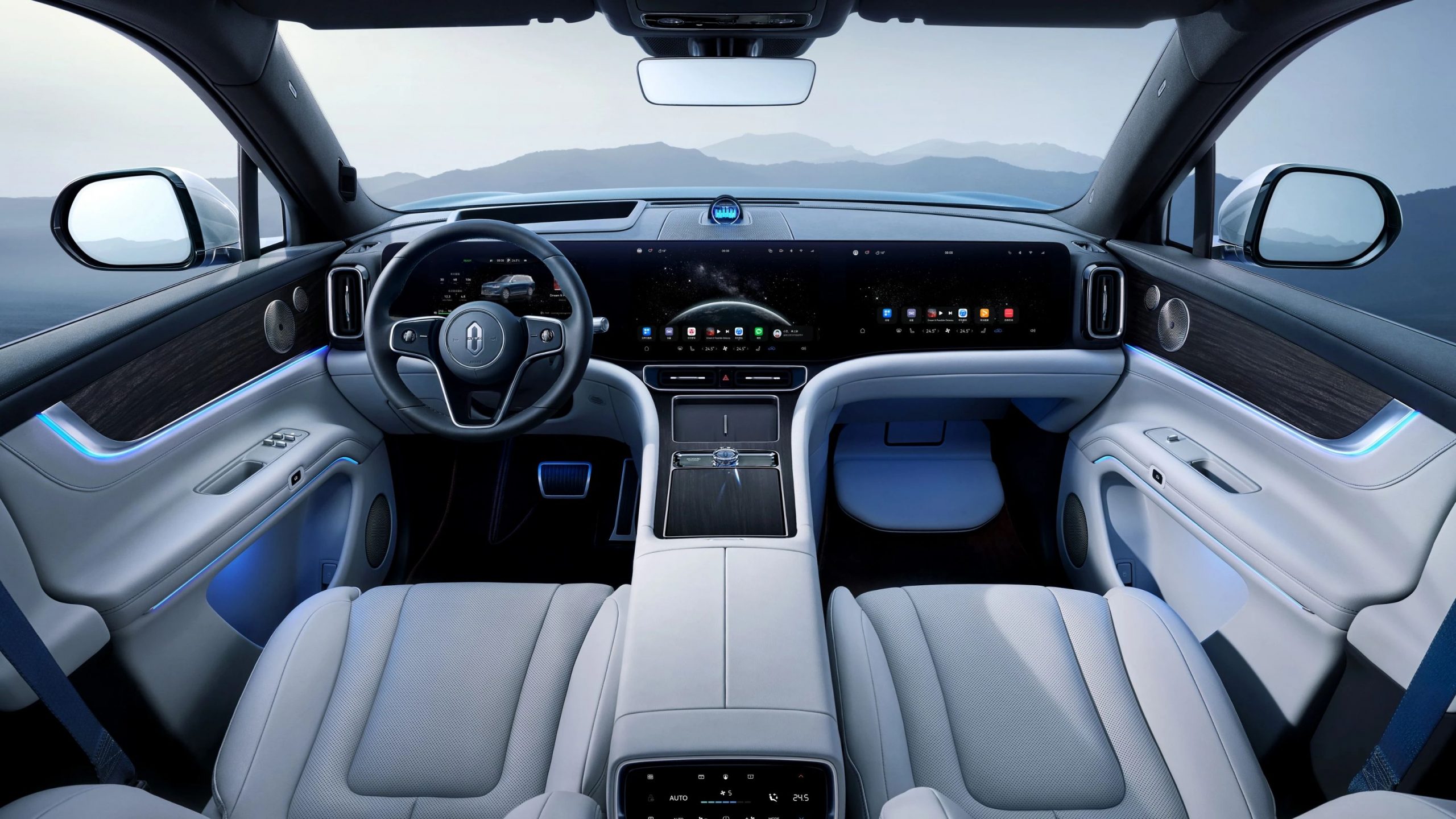As the most topical luxury flagship SUV of the year, the AITO M9 boasts numerous eye-catching technologies. For instance, the rear-row projection feature, never before seen in factory-made cars, has revised my perception of second-row inclusions in flagship SUVs. I bet it’s your first time seeing this configuration in a factory car as well.
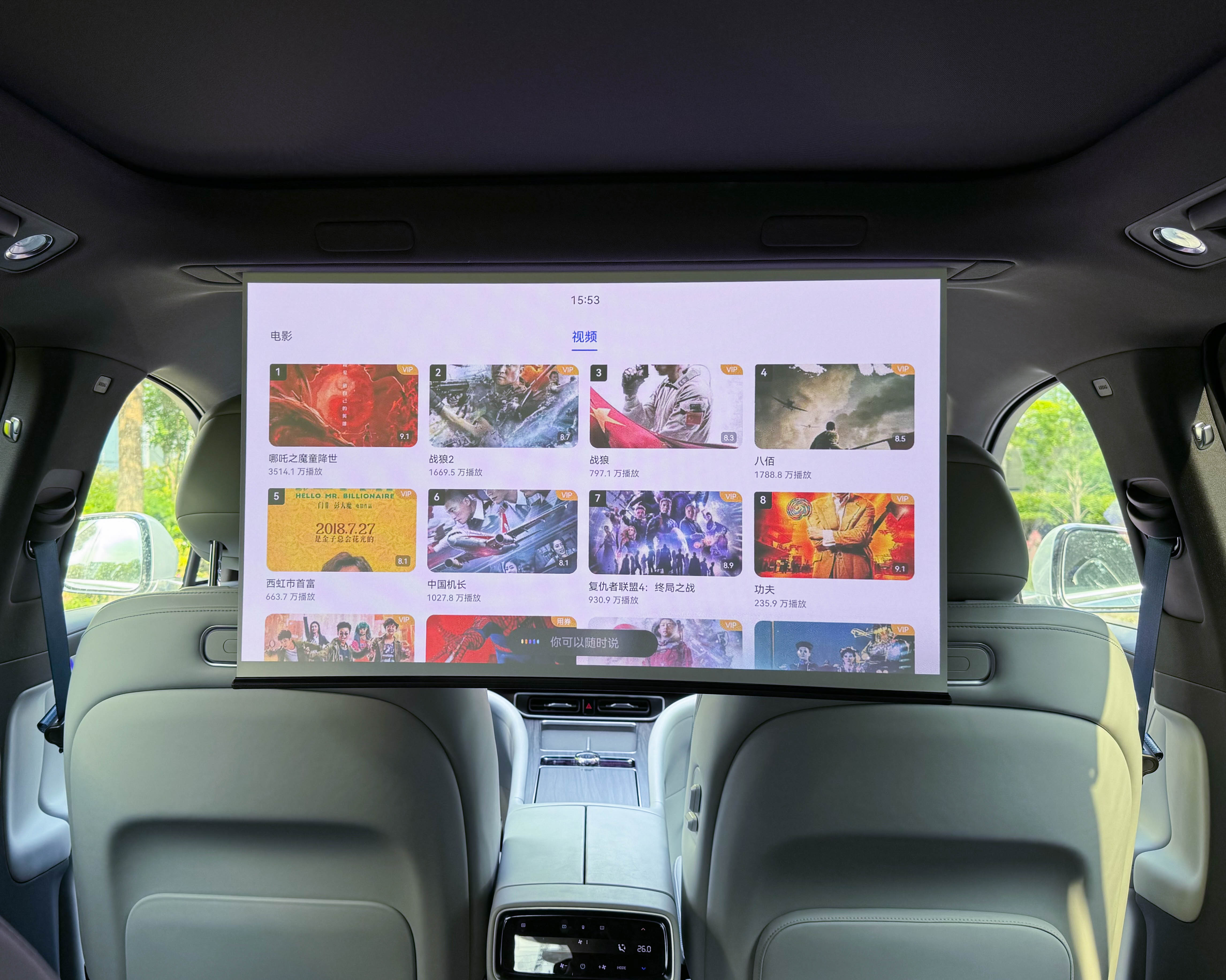
On the other hand, ever since LI sparked the trend of refrigerators, color TVs, and large sofas, nearly all luxury-related models have been leaning in this direction as much as possible. The AITO M9 also features a semiconductor refrigerator, with temperature settings ranging from 3 – 10 degrees Celsius or 35 – 50 degrees Celsius.
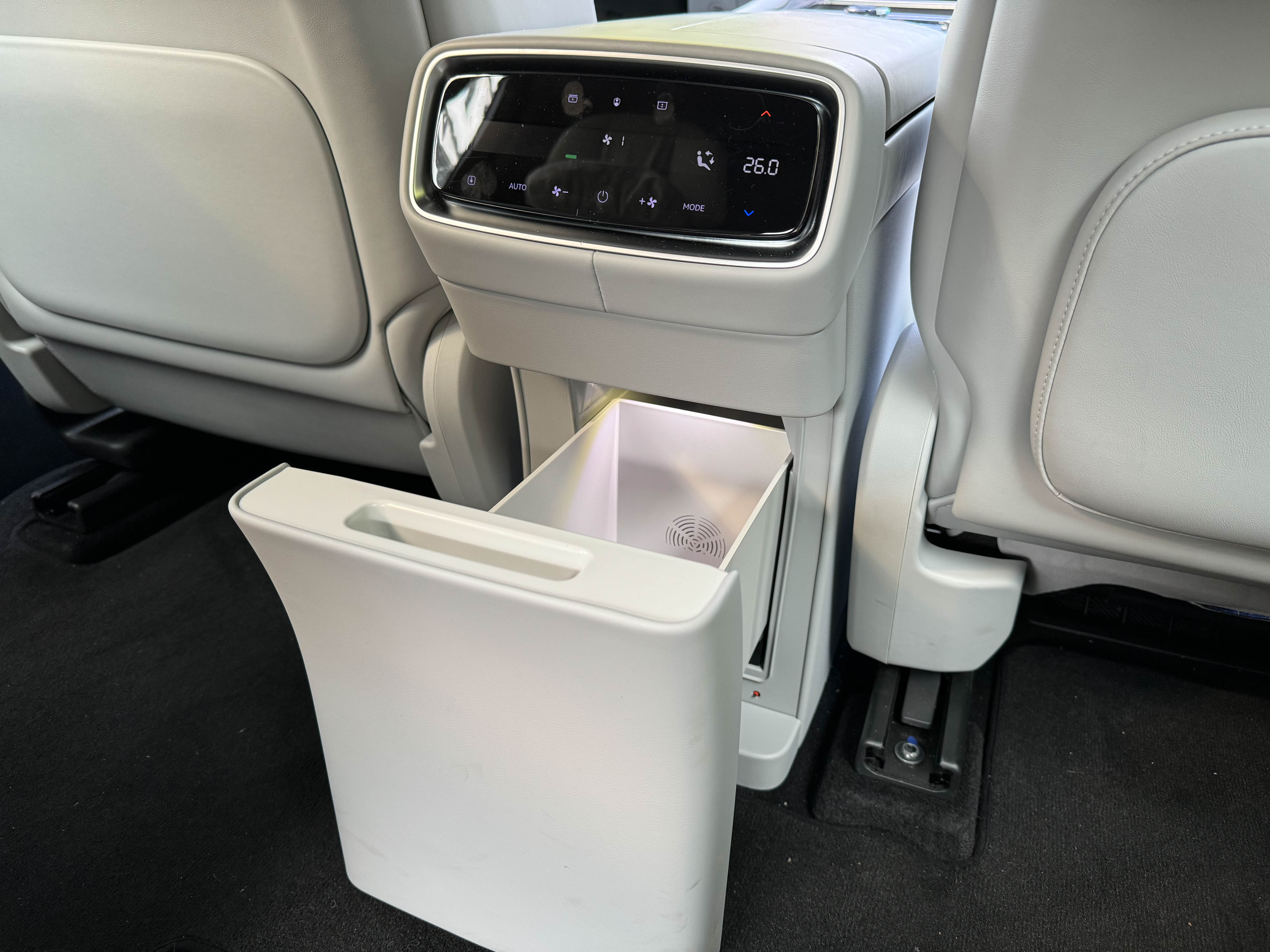
When it comes to the sofa portion, the M9 is equally inventive. The co-pilot seat can be folded forward, freeing up ample legroom for the right-side second-row seat, which itself can enter a zero-gravity mode for lounging; furthermore, the co-pilot seat also includes leg and foot rests.
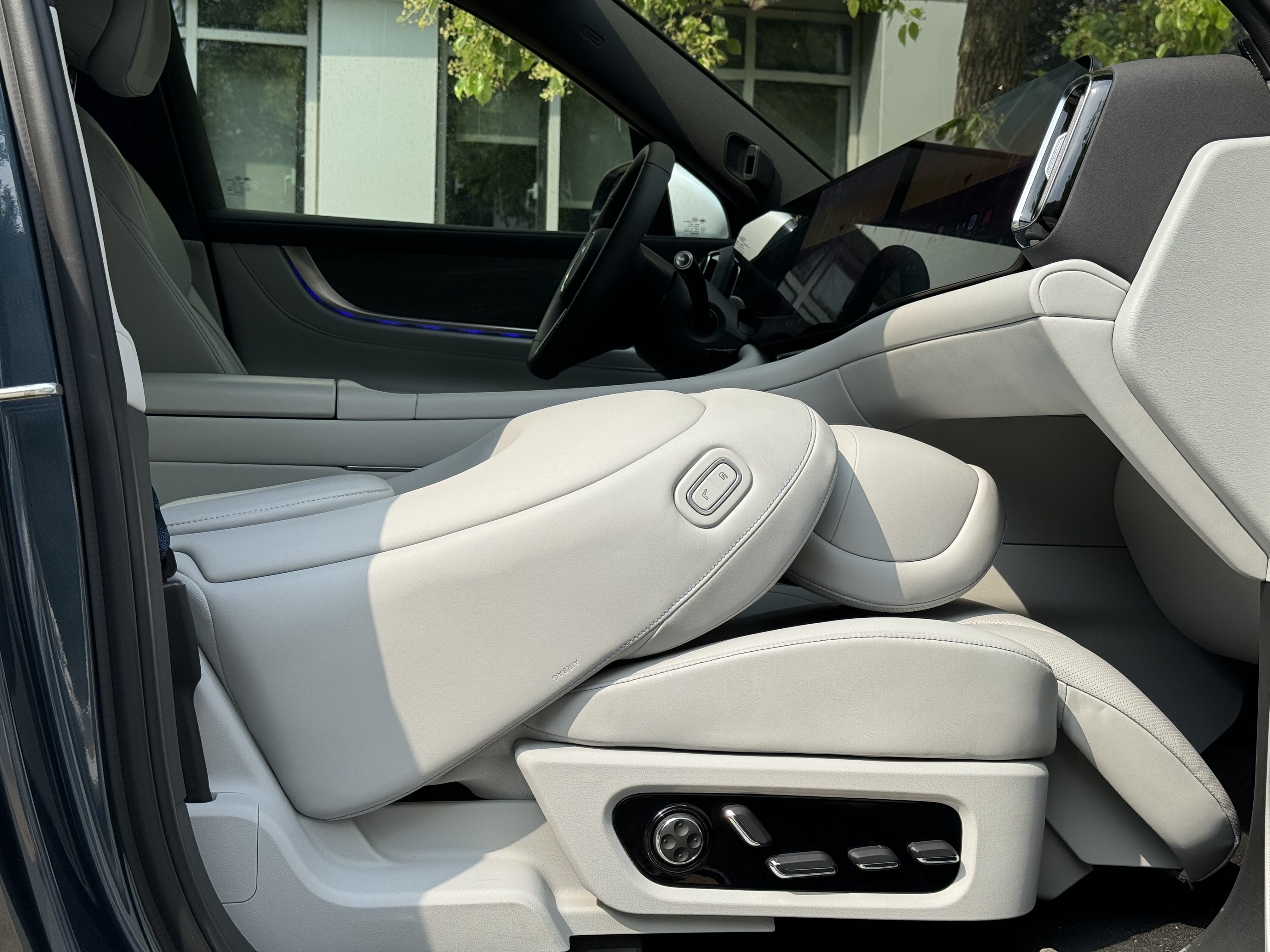
Therefore, if evaluating the M9 from a “refrigerator-color TV-large sofa” perspective, it undoubtedly pioneers innovative methods. While flexibly utilizing space, it offers a decent movie-viewing experience in both front and rear rows—even if this deviates from the car’s original properties.
All this technological and smart experience stacking hence necessitates invoking our 42Mark cockpit evaluation system that was implemented last year, to conduct a comprehensive evaluation of the AITO M9 electric Ultra version.
Will the universally recognized, “far ahead” HarmonyOS car system, and the latest and strongest smart experience continue to maintain its lead on the AITO M9? Our evaluation will cover basic experience, navigation and voice experience, entertainment experience, mobile ecology experience, and smart playability.
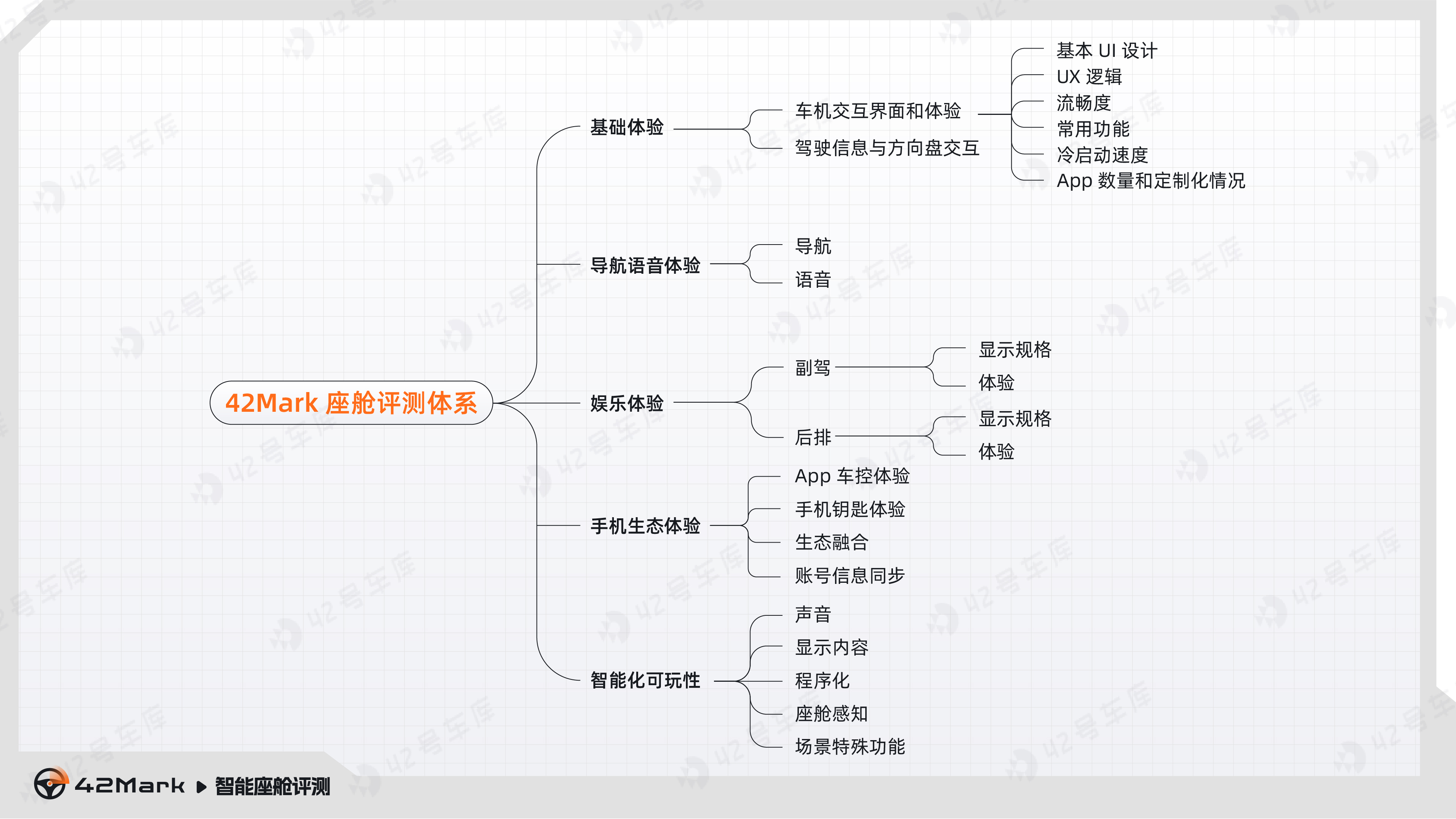
M9 HarmonyOS Cockpit Unboxing Experience
Basic Experience
Under the 42Mark cockpit testing standards, a basic experience represents the maturity and usability of a car system. In this regard, the M9 scores a total of 89.7 in the basic experience, ranking second in the current 42Mark leaderboard, slightly behind the LI L8 4.5.3 version evaluated last year. Given that LI’s 2024 models have also been updated to the 8295 chipset and the 5.1 system, the performance of HarmonyOS 4 on the M9 is as good as expected.The M9 adopts a tri-screen front row design. In addition to boasting substantial instrumentation and central control, it adds a co-pilot screen. Essentially, the interaction logic hasn’t drastically changed from the M5 and M7. Applaudably, it retains the edge-return gesture interaction, smooth touch experience and visual effects, and large, easy-to-use buttons; all of which are commended for their foundational experience.
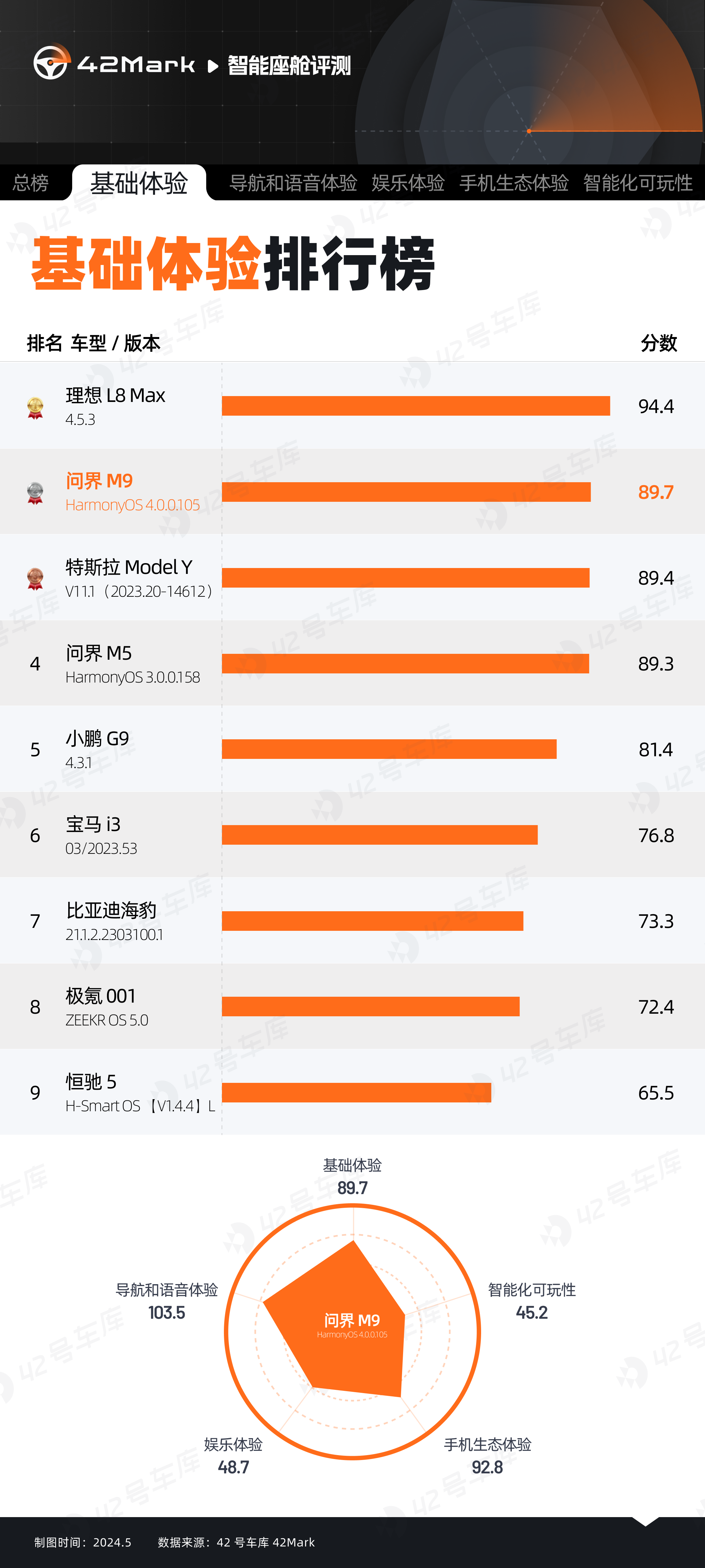
Detail-wise, features like the intelligent dynamic split-screen design facilitate an appropriate amount of information and interface arrangement in various interfaces when using navigation daily.
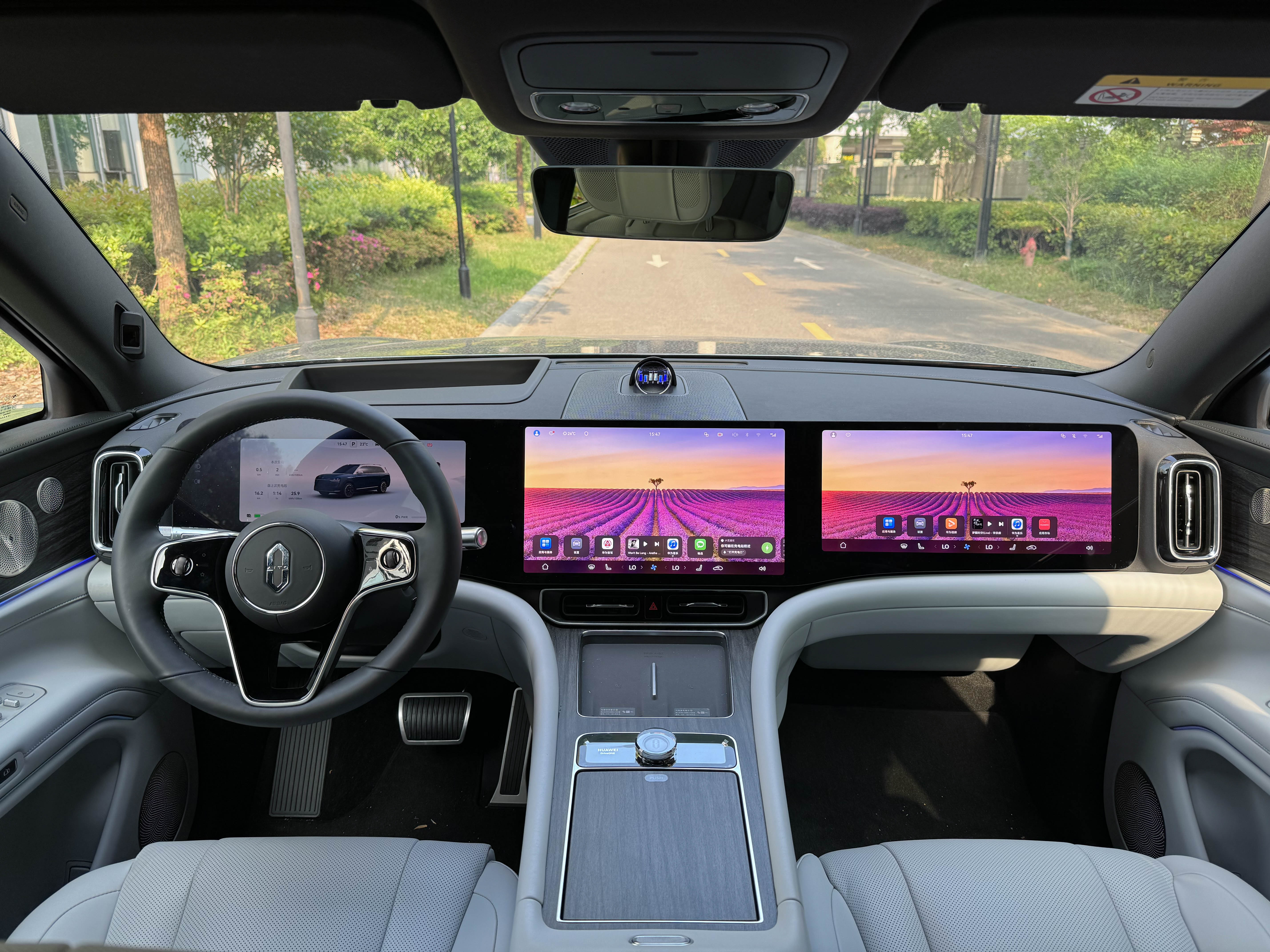
If we were to nitpick, the M9 doesn’t adhere well to the “left alignment” principle on the main screen. It retains the traditional wallpaper + double Dock bar design. Only upon activating navigation does a navigation floating window appear in the upper left of the main screen. More capabilities are stacked using a right-extending approach, making the interaction not quite logical.
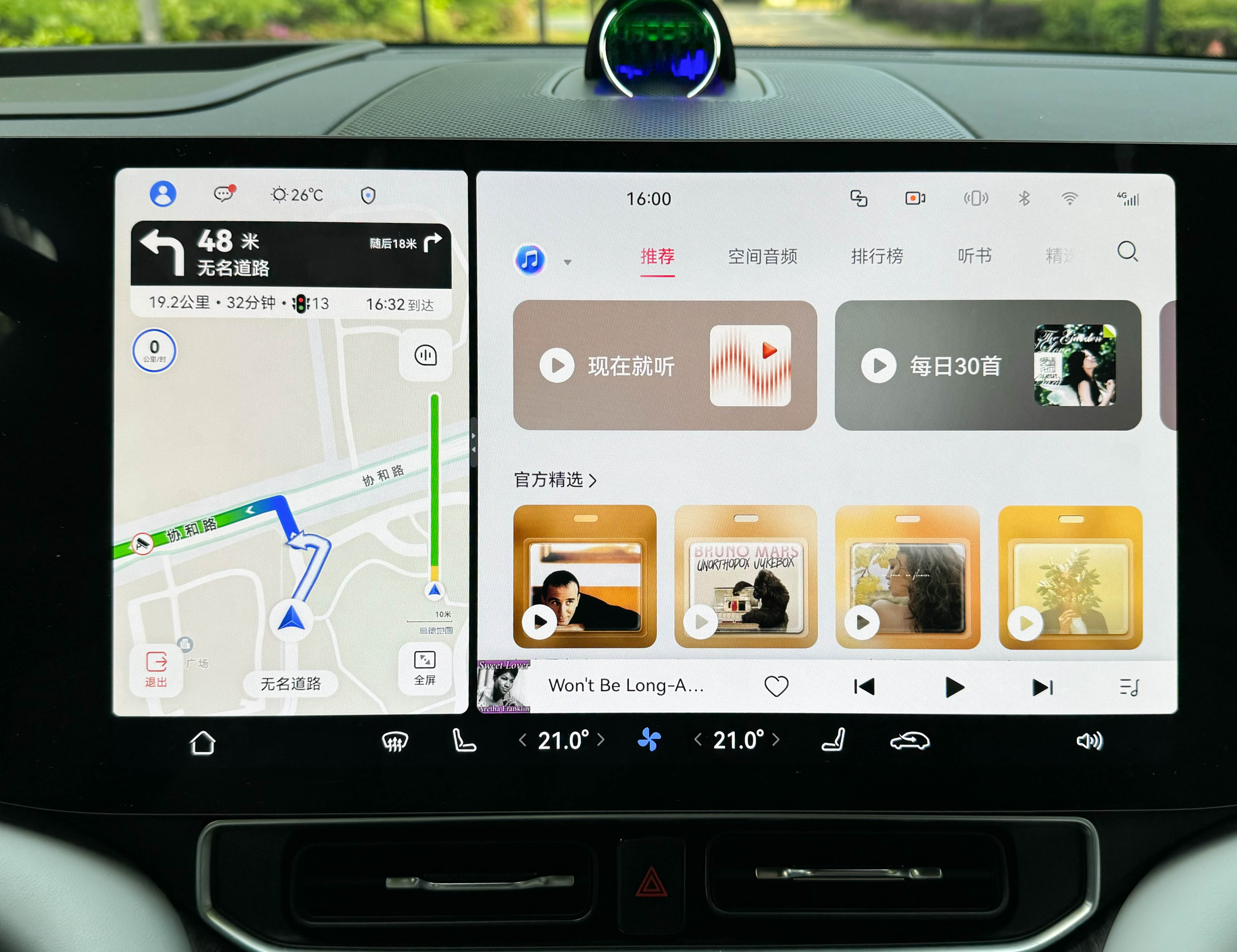
Regarding app ecosystem support, Harmony Car Machine consistently uses a whitelist combined with an app store mechanism, which allows installation of numerous apps inside the vehicle. During our examination, mainstream audio video apps were largely catered for, delivering a pleasant experience. Only a select few apps necessitate tailored interface customization.
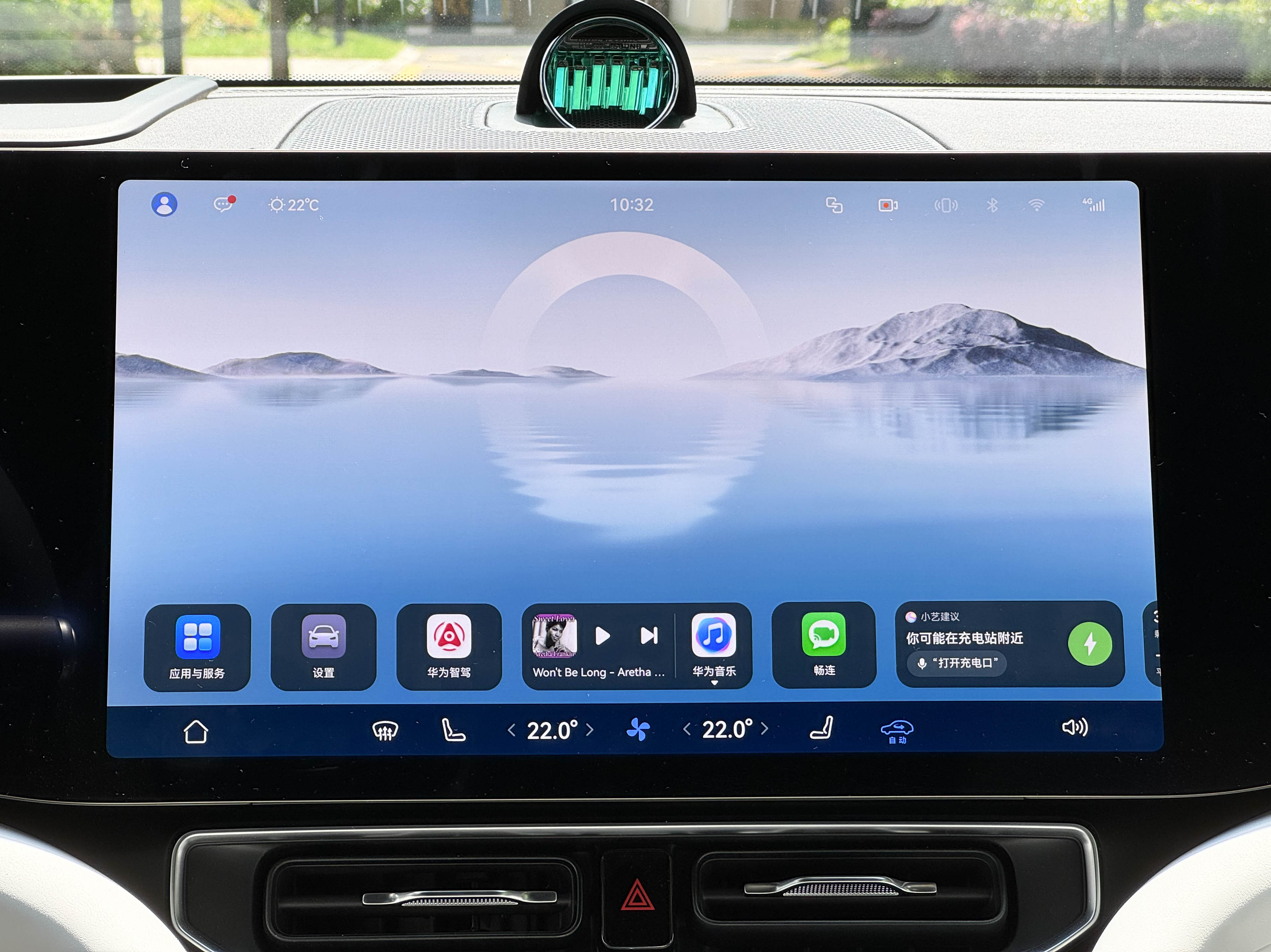
As per our performance testing, we took an average from the central control screen’s 9-point sampling. The M9’s central control screen has an average brightness of 1,182 nits, ranking first on the 42Mark test chart. However, disappointingly, it still uses LCD screens instead of the more balanced performing MiniLED material. In terms of OLED material, it’s rather unstable displaying brightness above 1,000 nits, so it’s up to everyone to decide which screen material is best in a car.
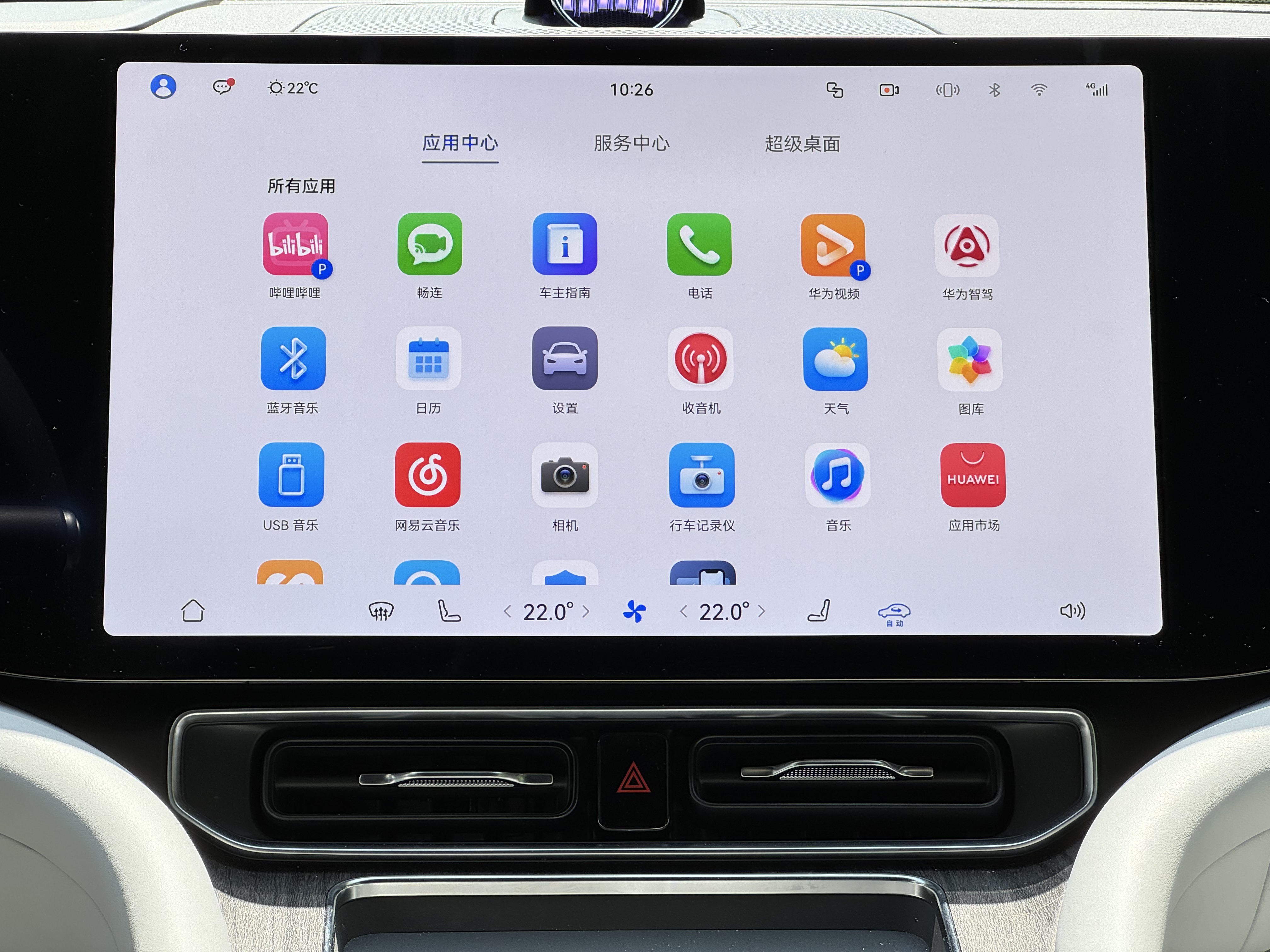 Additionally, we assessed the screen touch latency of the M9. Taking an average of multiple sampling points on touch and slide, the M9 screen responds in 0.102 seconds. In the 42Mark touch screen latency rankings, this puts it in second place. Although it lags behind the 10ms level easily achieved on smartphones, just like other cars, it does not interfere with any daily experience.
Additionally, we assessed the screen touch latency of the M9. Taking an average of multiple sampling points on touch and slide, the M9 screen responds in 0.102 seconds. In the 42Mark touch screen latency rankings, this puts it in second place. Although it lags behind the 10ms level easily achieved on smartphones, just like other cars, it does not interfere with any daily experience.
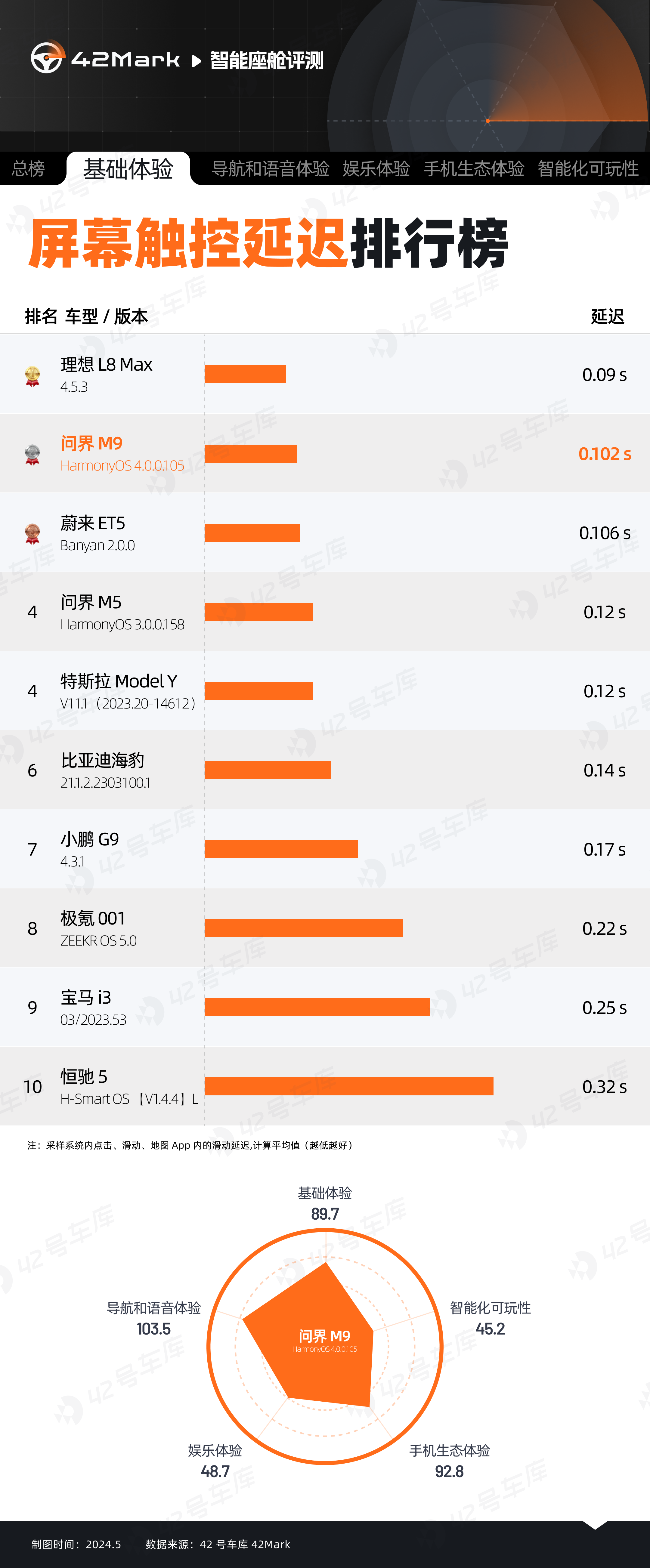
In terms of the driving information interaction experience at the main driver’s place, the M9 performs without any problem in most of the items we examined. However, the capacitive buttons on the steering wheel are, by our standards, somewhat inferior to the experience of physical buttons.
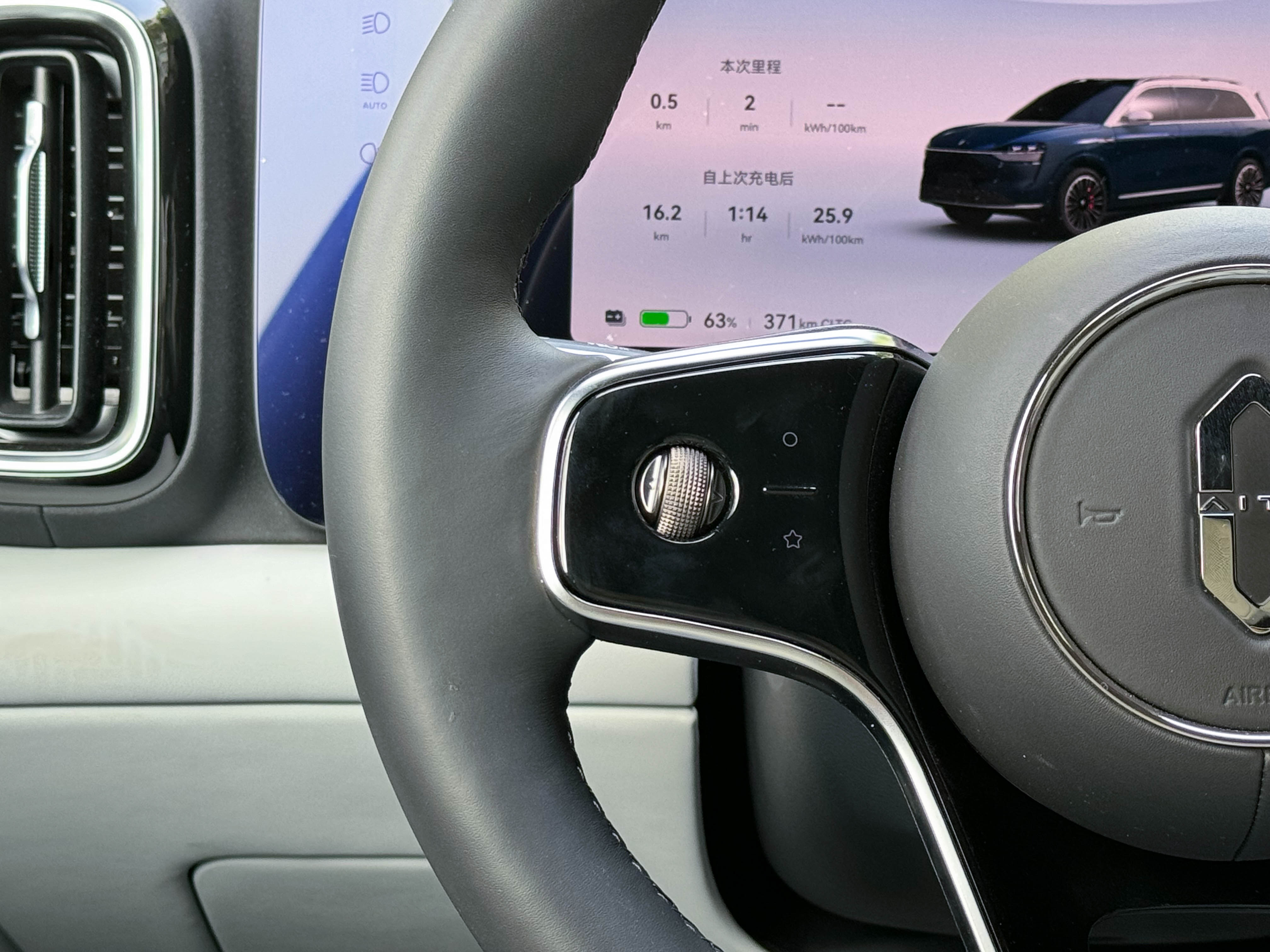
Another odd detail is the striking contrast between the fluidity of the M9’s instrument panel and the central control screen. Though the central control screen is top-notch in terms of fluidity among automotive machines, the instrument panel provides a lower-tier, rather laggy experience, especially when shifting the car view which feels like PowerPoint. We hope subsequent OTAs will address this issue.
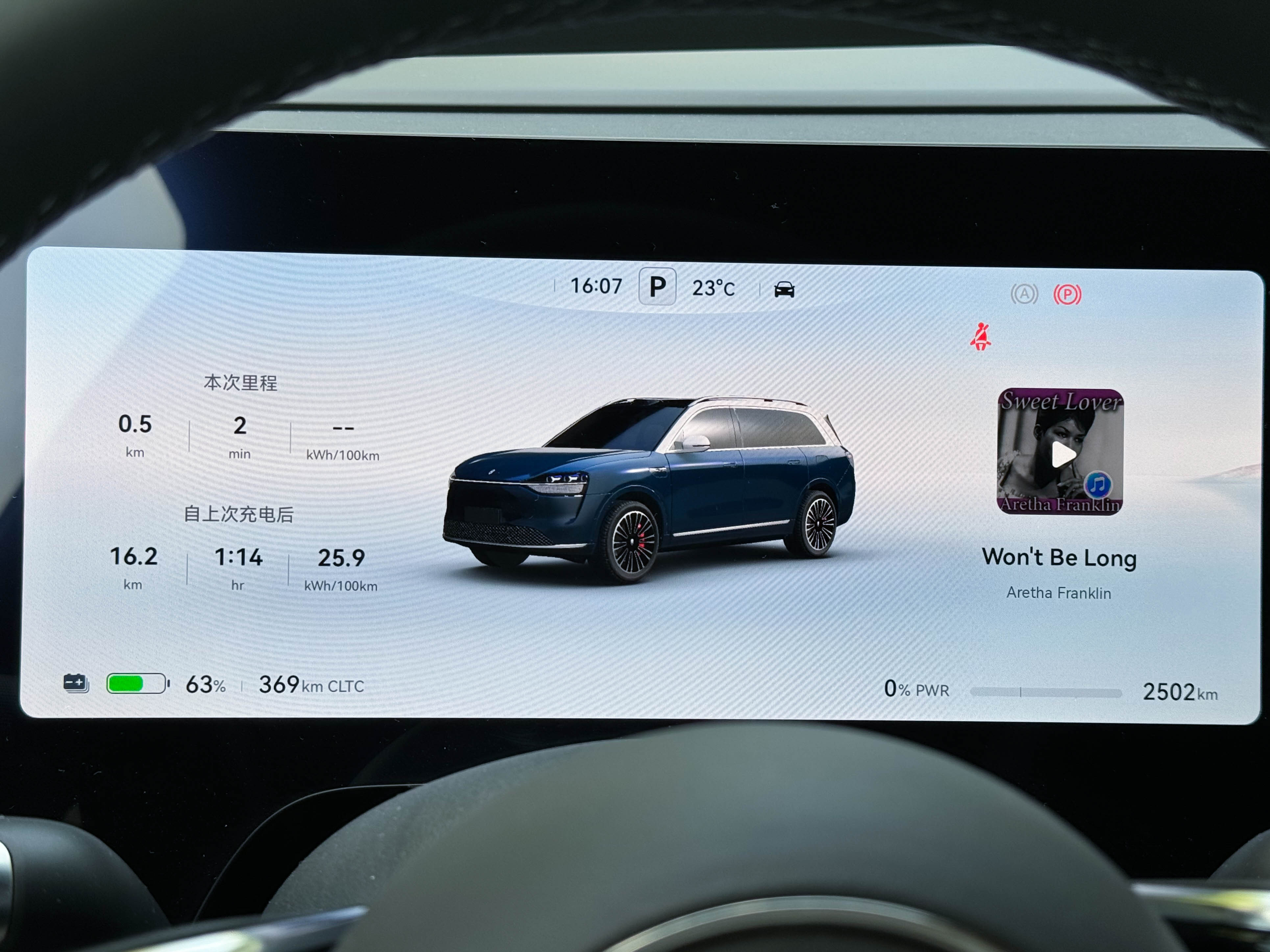
In general, the M9 maintains a high standard of the basic experience characteristic of HarmonyOS 4. Yet, for a model starting delivery in 2024, it doesn’t hold much surprise.
Navigation and Voice
The quality of a car system is not only about its static basic experience. To test the M9’s navigation and voice capability in real driving scenarios, we had the M9 run a route of 26 kilometers, passing through various sections in Shanghai, including high-speed roads, overpasses, ground level roads, tunnels, and tested its voice function. It scored a strong 103.5 in navigation and voice experience, ranking 2nd on the current 42Mark leaderboard — more than 10 points higher than last year’s tested AITO M5, living up to the expectation of a ‘’far and away lead”.
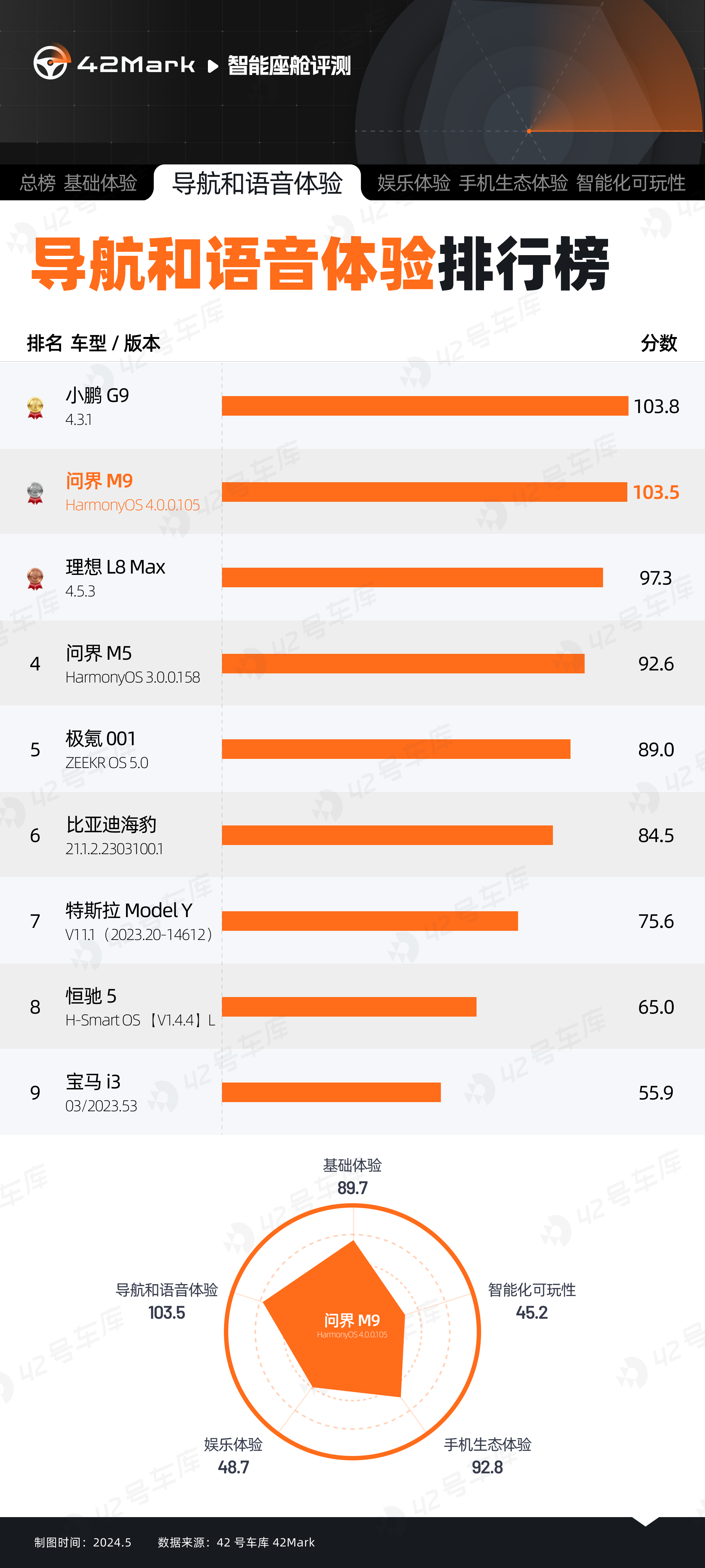 Although the navigation application in the M9 robot is Ask Intelligent Travel (AITO), it still uses map data based on Gaode data. The overall experience is silky smooth. When setting the navigation, besides the shortcut keys such as home, company, and commonly used addresses, you can also use the fast scenarios to achieve automatic navigation to and from work.
Although the navigation application in the M9 robot is Ask Intelligent Travel (AITO), it still uses map data based on Gaode data. The overall experience is silky smooth. When setting the navigation, besides the shortcut keys such as home, company, and commonly used addresses, you can also use the fast scenarios to achieve automatic navigation to and from work.
The connection of the vehicle and device has once again expanded its boundaries. Not only can WeChat send addresses, but third-party Apps like US group and Dianping can also send addresses to the car notes. If you have a HarmonyOS phone, you can use NFC near field communication between the phone and the control panel to realize touch navigation. This experience is still invincible in the cars we have driven.
Unlike the main interface, the information module during navigation adheres to the left-leaning principle. Thumbnails, lane information, and the distance to the next intersection are all available. Compared with Gaode Maps on mobile phones, the information update of M9 does not have a significant delay and will not miss intersection due to untimely navigation information.
The thumbnail will also zoom in promptly when passing through the intersection, clearly marking the driving direction on the lane. The traffic light countdown and the AR navigation of the HUD interface further enrich the M9 navigation. After running for 26 kilometers, there has been no deviation in navigation or errors in information throughout the trip.
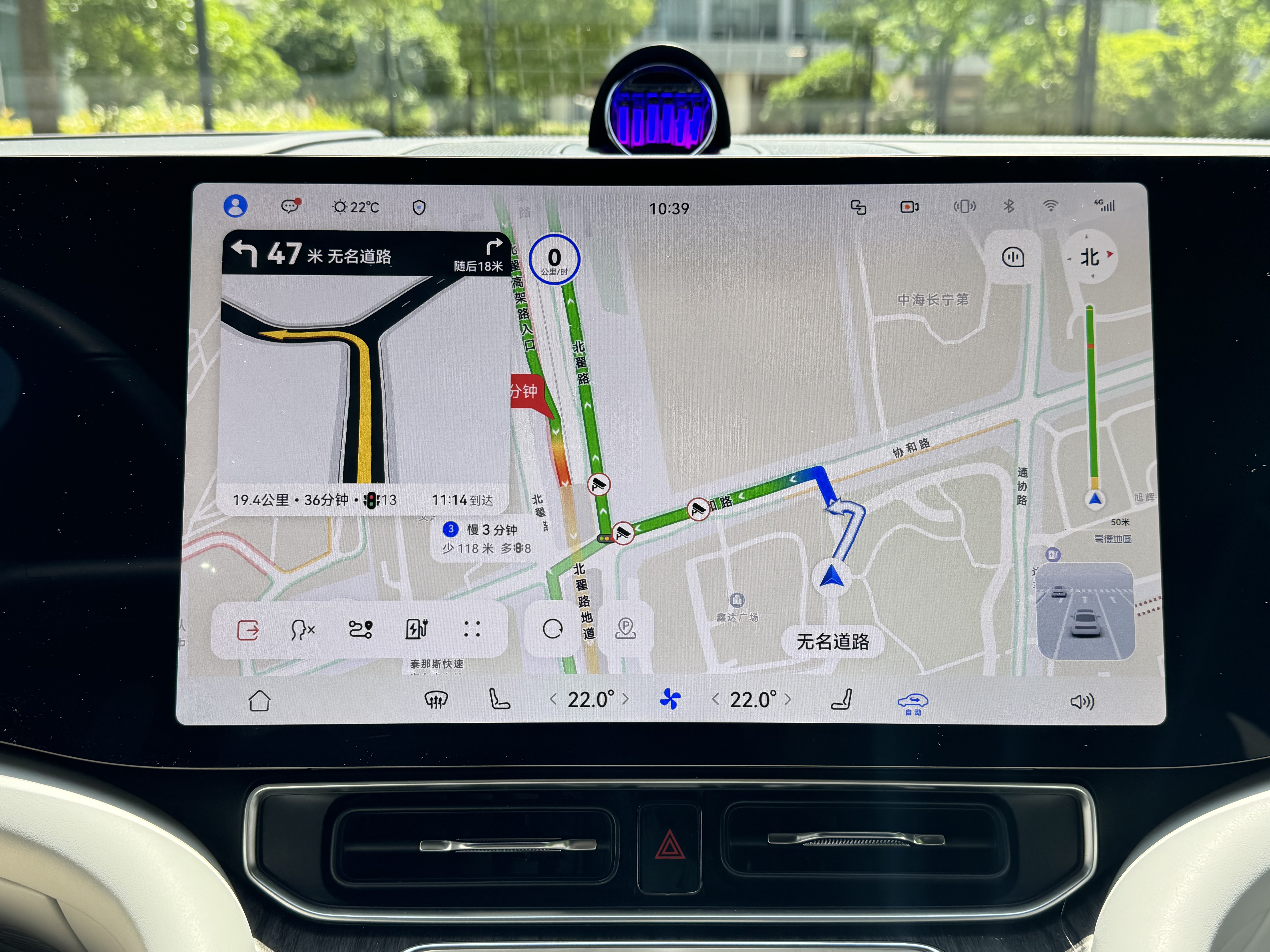
However, there have been rumors that Huawei still has higher adaptation requirements for navigation, and may seek cooperation with Baidu Maps in the future. Will there be more surprises by then?
As for the voice function of M9, the surprises we experienced are not too many. The coverage of the voice is still comprehensive, vehicles control, navigation, music can be solved by “Ask Intelligent Travel”. The interface is voice-activated, greatly reducing the trouble and risks of manual operations.
The voice feedback delay averaged 1.16 seconds over 10 multi-dimensional command tests, ranking second in the 42Mark measurement list, and the execution speed was also within 0.2 seconds. The overall experience was very smooth.
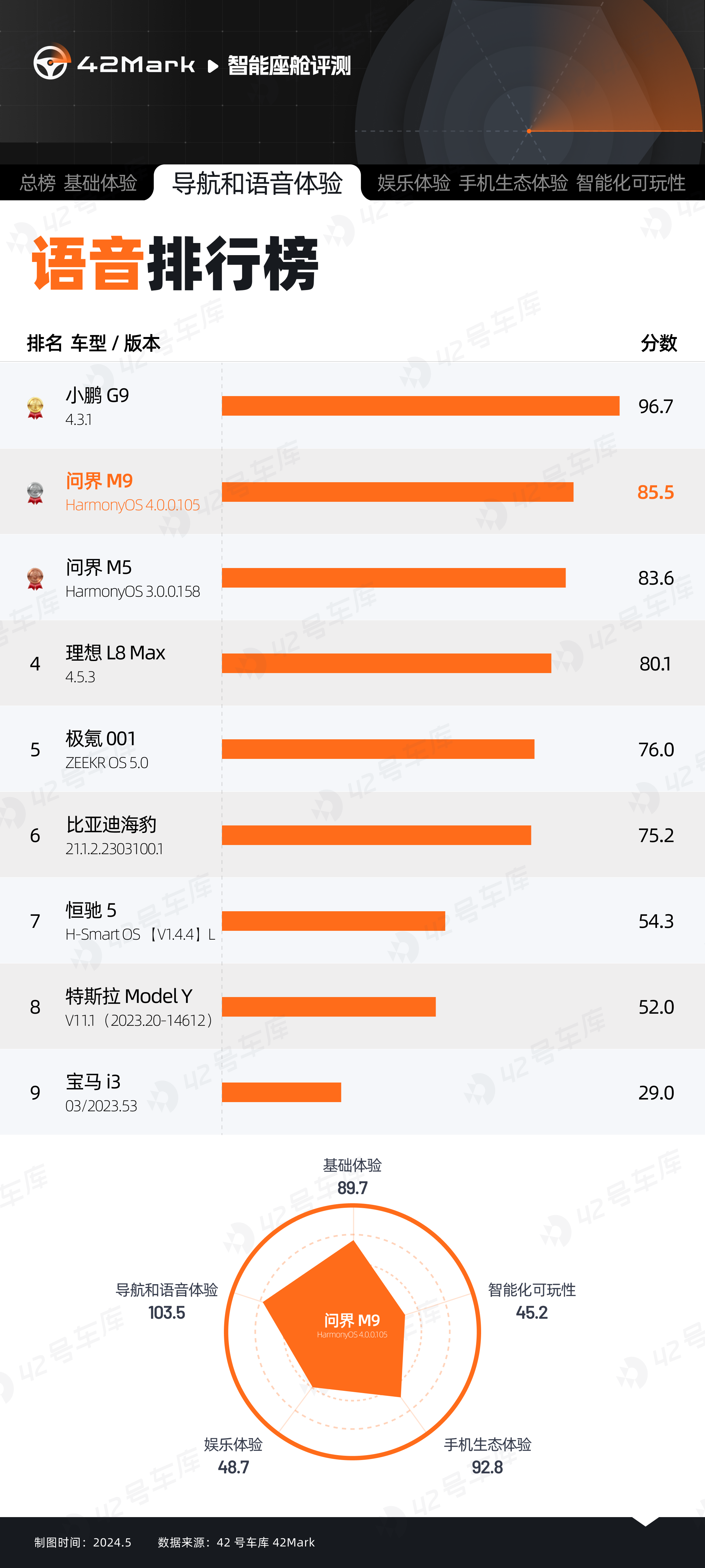
The current version we tested has increased its AI capabilities with the help of the Pangu model. Just like other GPT chat models, it can answer various questions AI-powered in voice Q&A.
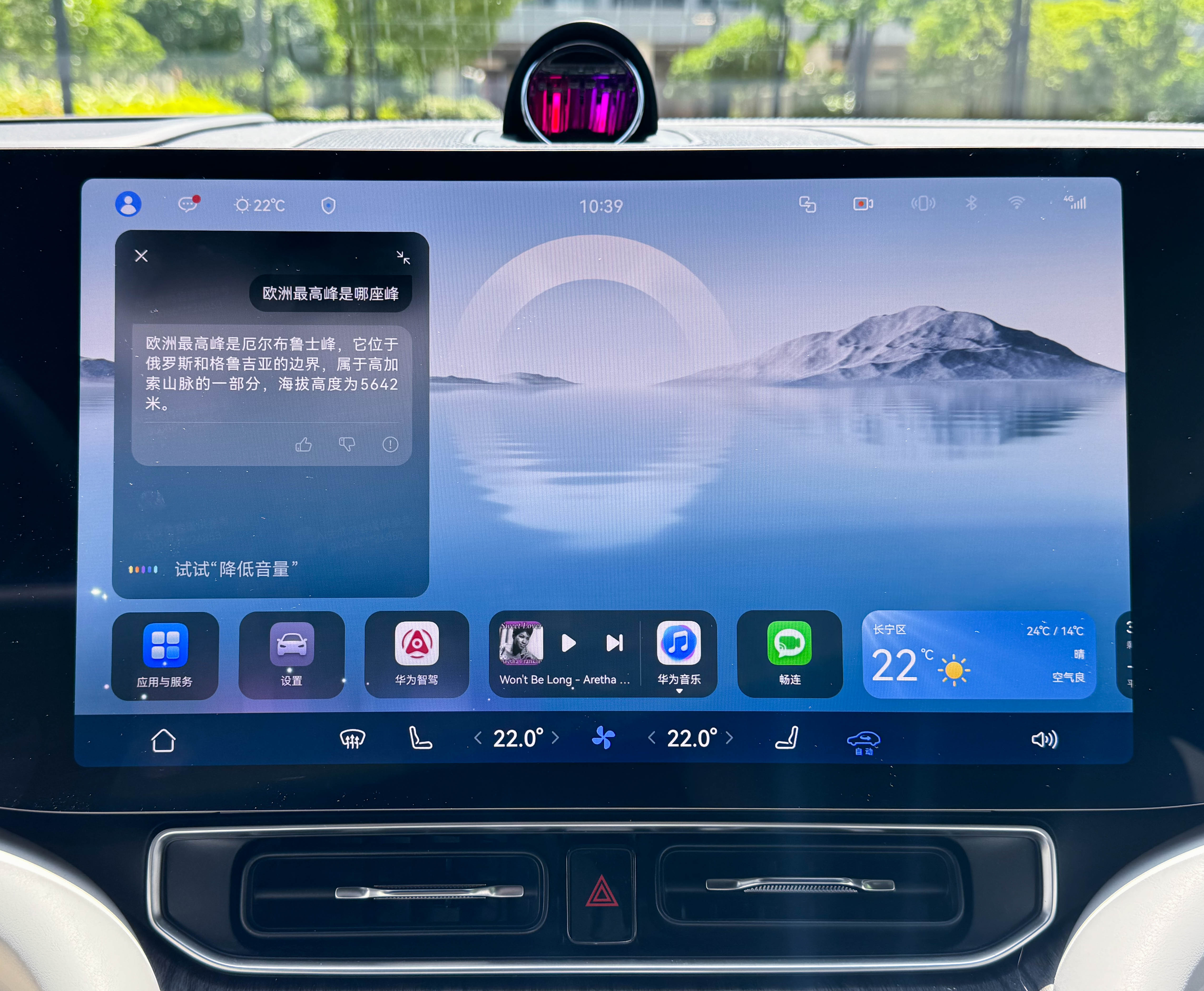 However, at present, the ability of voice AI is still more of an icing on the cake. More importantly, we still need to consider how the basic functions work in conjunction with the car use scenario. In some special voice functions, M9 has also reached top-tier levels. The continuous dialogue feature allows you to give all instructions in one sentence, the precise recognition of multi-tone zones allows you to control the music by voice even if you are sitting in the third row, and it supports recognition of Mandarin, Sichuan dialect, and Cantonese, trying to accommodate all the members in the car.
However, at present, the ability of voice AI is still more of an icing on the cake. More importantly, we still need to consider how the basic functions work in conjunction with the car use scenario. In some special voice functions, M9 has also reached top-tier levels. The continuous dialogue feature allows you to give all instructions in one sentence, the precise recognition of multi-tone zones allows you to control the music by voice even if you are sitting in the third row, and it supports recognition of Mandarin, Sichuan dialect, and Cantonese, trying to accommodate all the members in the car.
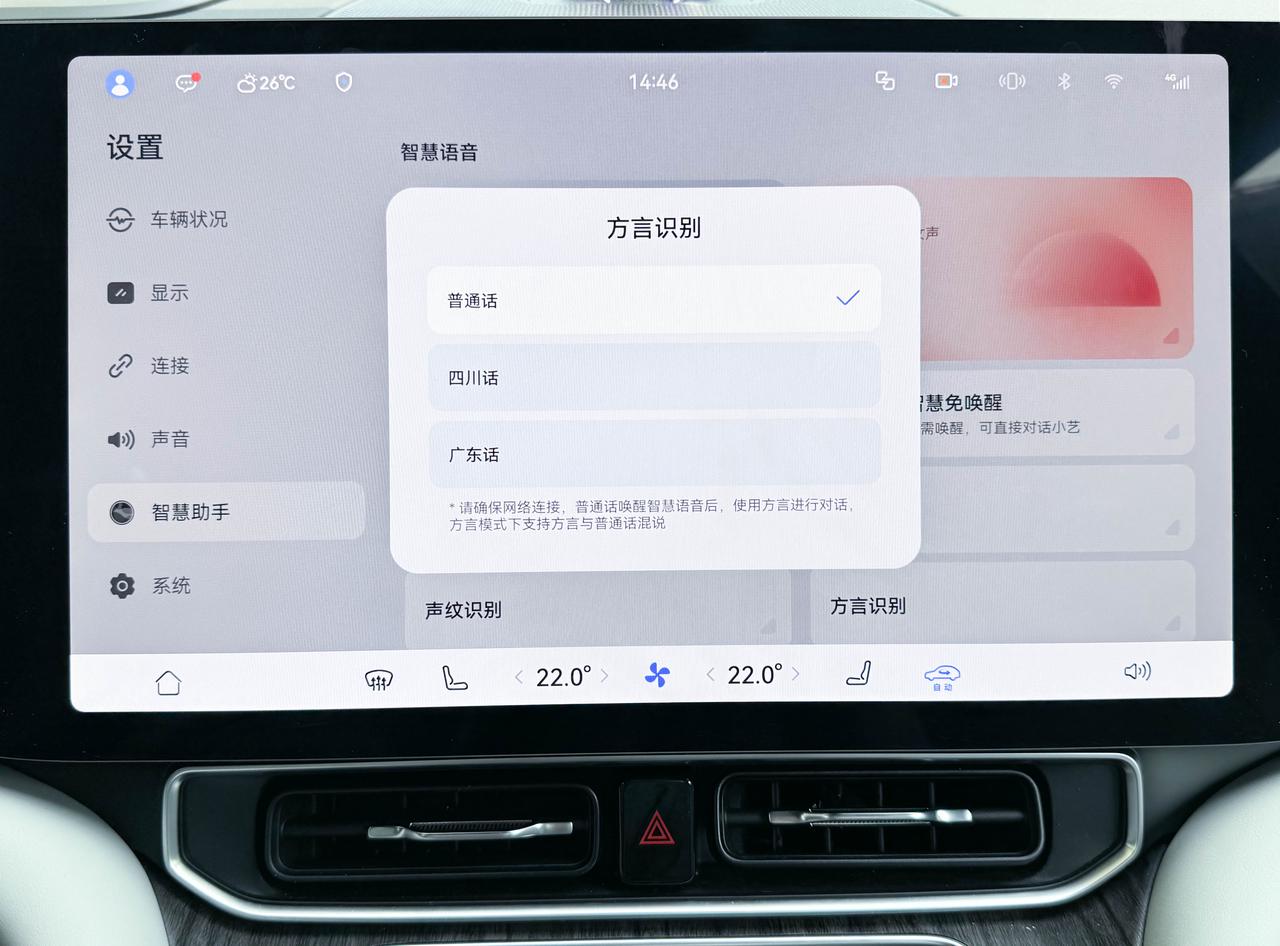
Unfortunately, the M9’s voice-trigger-free feature is not very sensitive, occasionally failing to recognize on the first attempt, and its fuzzy recognition of instructions is also a bit “strict. For instance, you cannot say common commands like “Open 360”, but you have to say the more indirect “Open Panoramic View”, “Turn off the lights” is not recognized as turning off the exterior lights, but defaults to turning off the interior reading light. Fortunately, the OTA not long ago resolved these two issues, showing that AITO is still making continuous optimizations on voice control features.
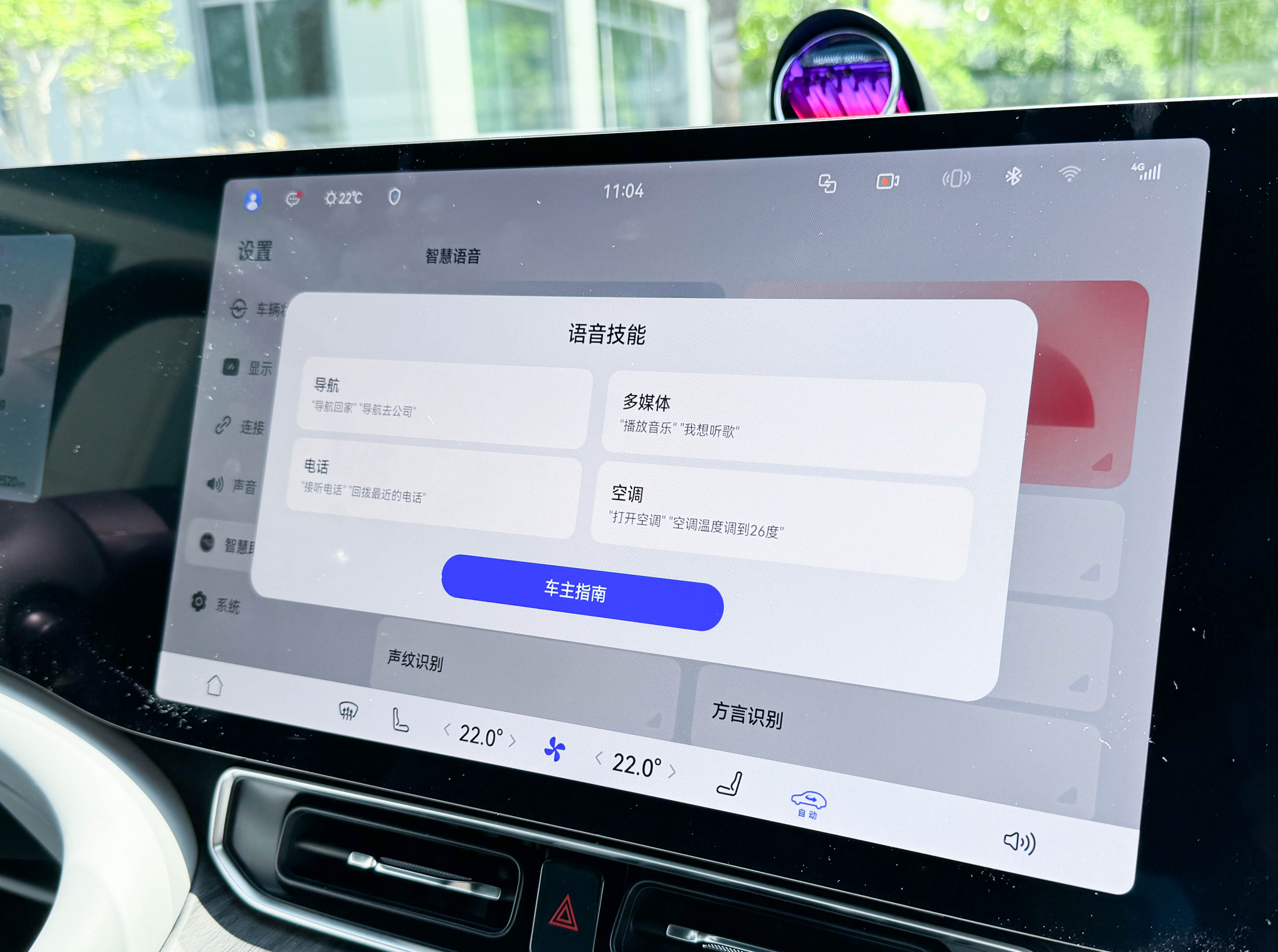
Overall, the M9 falls slightly short in voice experience, but there’s nothing to nitpick about its navigation experience. Even without using the NCA smart driving function, if you just want to drive it from point A to point B, it can make your ride quite smooth.
Entertainment Experience
The AITO M9, positioned as a “Panoramic Intelligent Flagship SUV”, has some differences in the details of the entertainment experience compared to family-oriented models like LI. The co-pilot adopts a 16-inch large screen that is integrated with the central control, and the huge rear projection gives me a novel and awkward experience. This sector scored 48.7 for the M9, ranking number 1 in the current 42Mark real test board. Let’s talk about the front and rear seats separately.

Looking at the co-pilot’s entertainment screen, the brightness of the M9’s co-pilot screen is as high as 1,044 nits, with a resolution of 3K, which is higher than the 2K of the central control screen in terms of horizontal resolution. However, as AITO has not yet released specific resolution information, and the car machine does not support cracking, the resolution data is for reference only.
The co-pilot screen supports separate account login and Bluetooth connection, ensuring the independence and privacy of the co-pilot, which is highly appreciated. Based on our actual experience, maintaining a posture for 10 minutes won’t be too tiring, and the amplitude of tilting or lowering the head is not large. With a slight forward movement of the body, you can touch and operate, showing that the layout design of the co-pilot screen and all the automotive machine screens are considerate.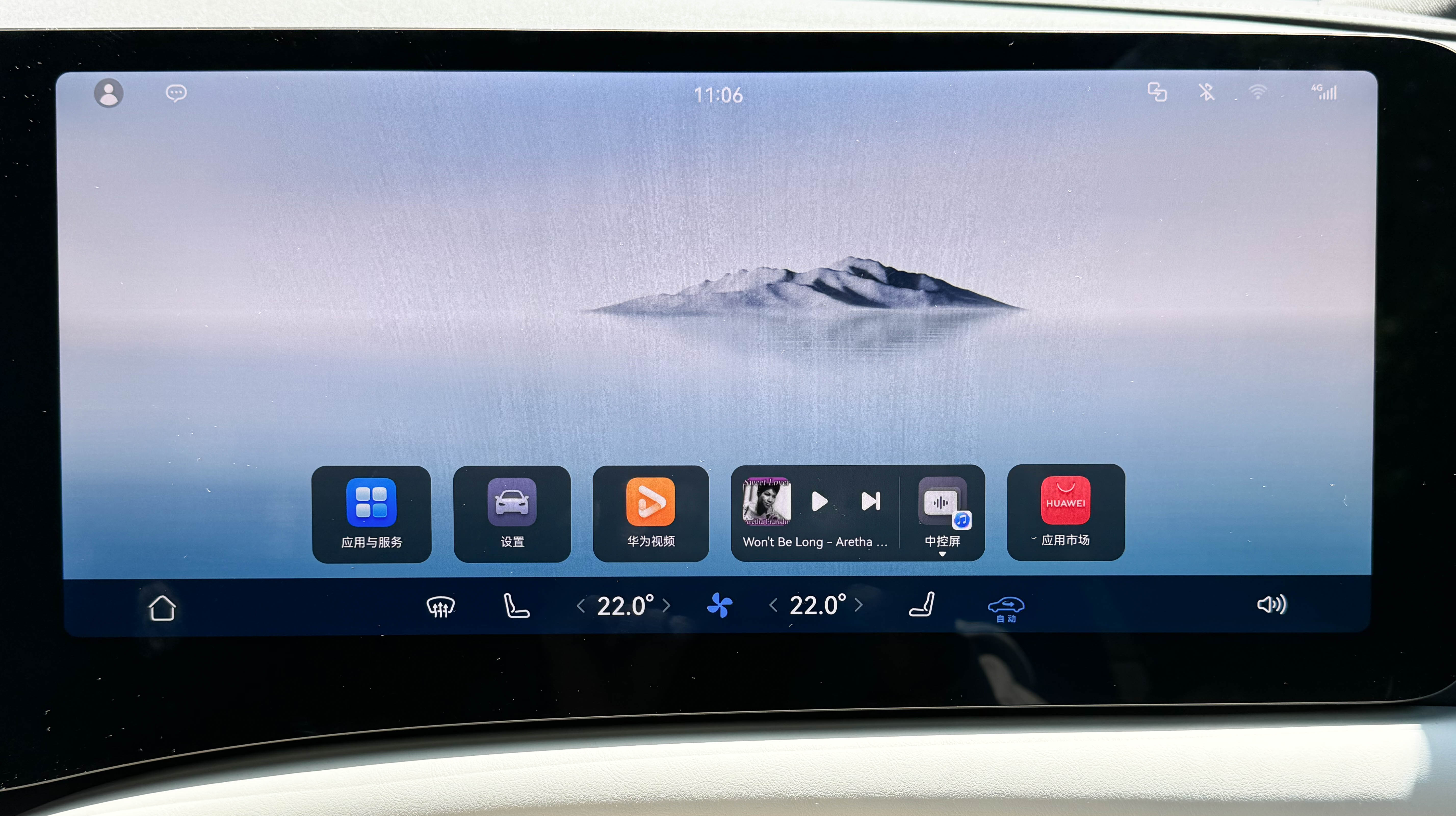
In terms of content richness, the software operation of the M9 copilot screen is independent of the central control screen, basically covering mainstream audio and video software, and has a high level of customization. The sub-screen also supports some simple small games, but 3A masterpiece games should not be considered. I believe not many people would want to play “Cyberpunk 2077” in the car, which would somewhat conflict with the setting.
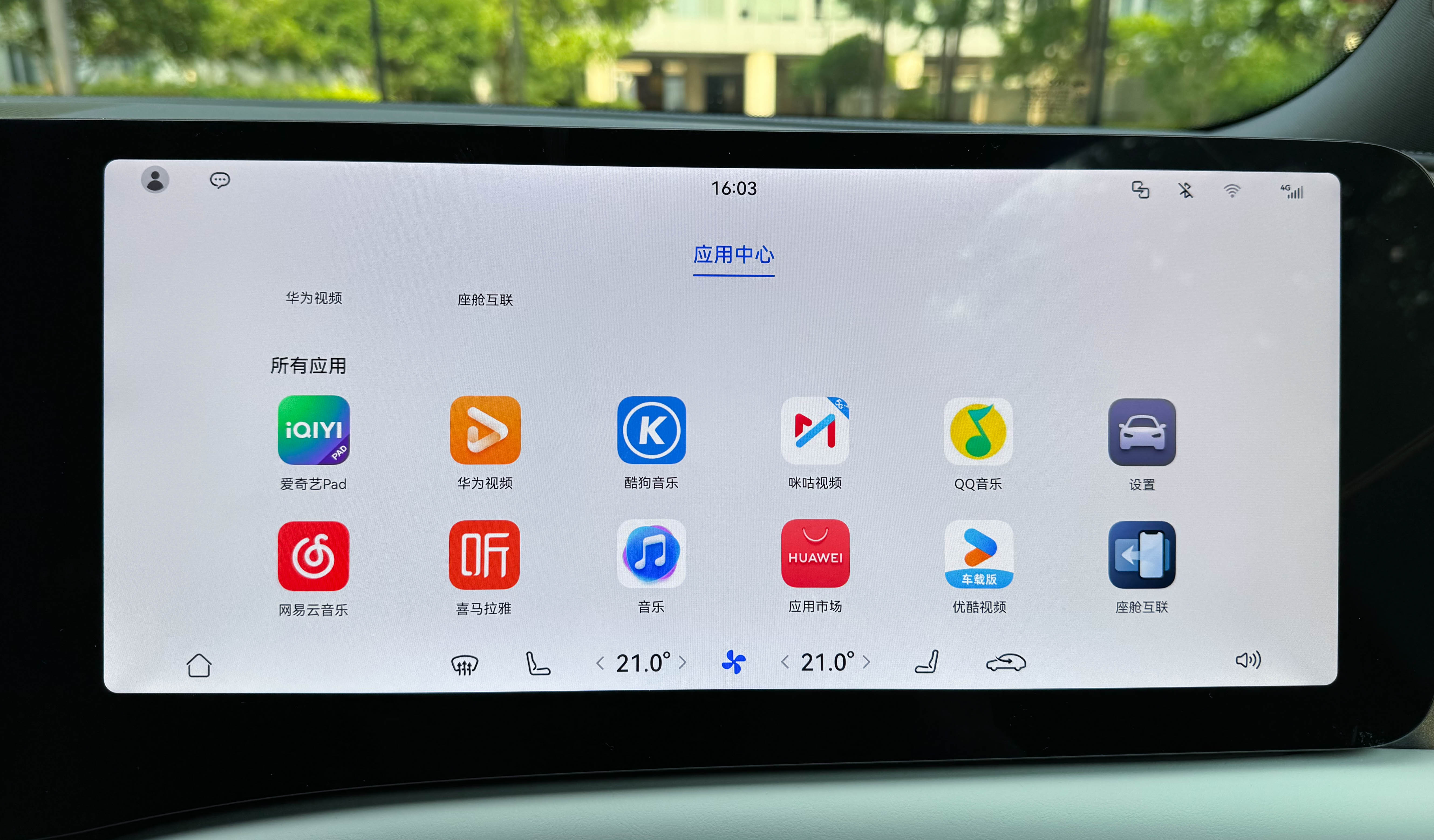
Upon arriving at the rear seats, the 32-inch screen provides a rather stunning impact. With interior lights off at night, the projector creates a profound ambiance. The large screen also adds a certain degree of privacy for the rear seats vis-à-vis the front seats.
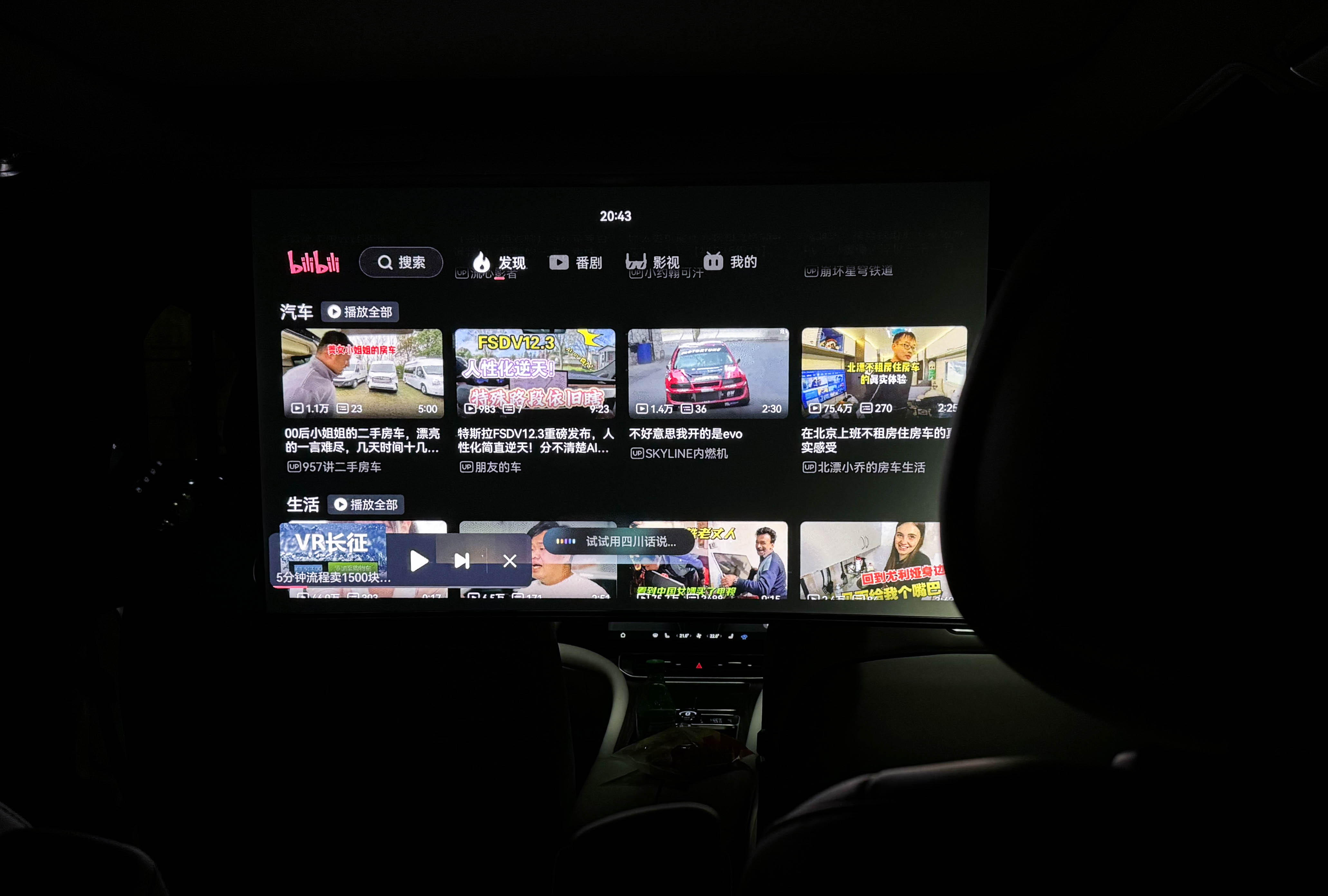
However, problems arise. The projector’s unique characteristics significantly reduce its resolution, and the brightness is approximately only 100 – 200 nits. Under bright daylight, the screen’s whiteness is prominent, which impacts the viewing experience to some extent.
Also, there are some interactive issues. As the original car isn’t equipped with a remote control, the main method of interaction with the projector can only be through voice control and its content recognition and coverage fall significantly behind the car screen.
Although it can be controlled via an authorized smartphone and Huawei’s smart screen remote, in our 42Mark’s standards, if the original car didn’t come with it, it cannot be counted towards the score. We hope that M9 can provide every user who chooses the projector with a default remote.
Furthermore, the distance between the second row seats and the screen is too close. A 32-inch size requires the second-row passengers to tilt their heads to watch, and a large FOV can induce a strong sensation of dizziness after prolonged viewing. Despite the projector’s smart driving technology, which optimises stability while on the move, it does little in managing the dizziness. The most suitable viewing experience occurs when the car is stationary and you’re sat in the middle of the third row. Looking at it this way, both from a product design and practical experience perspective, it feels a bit odd.
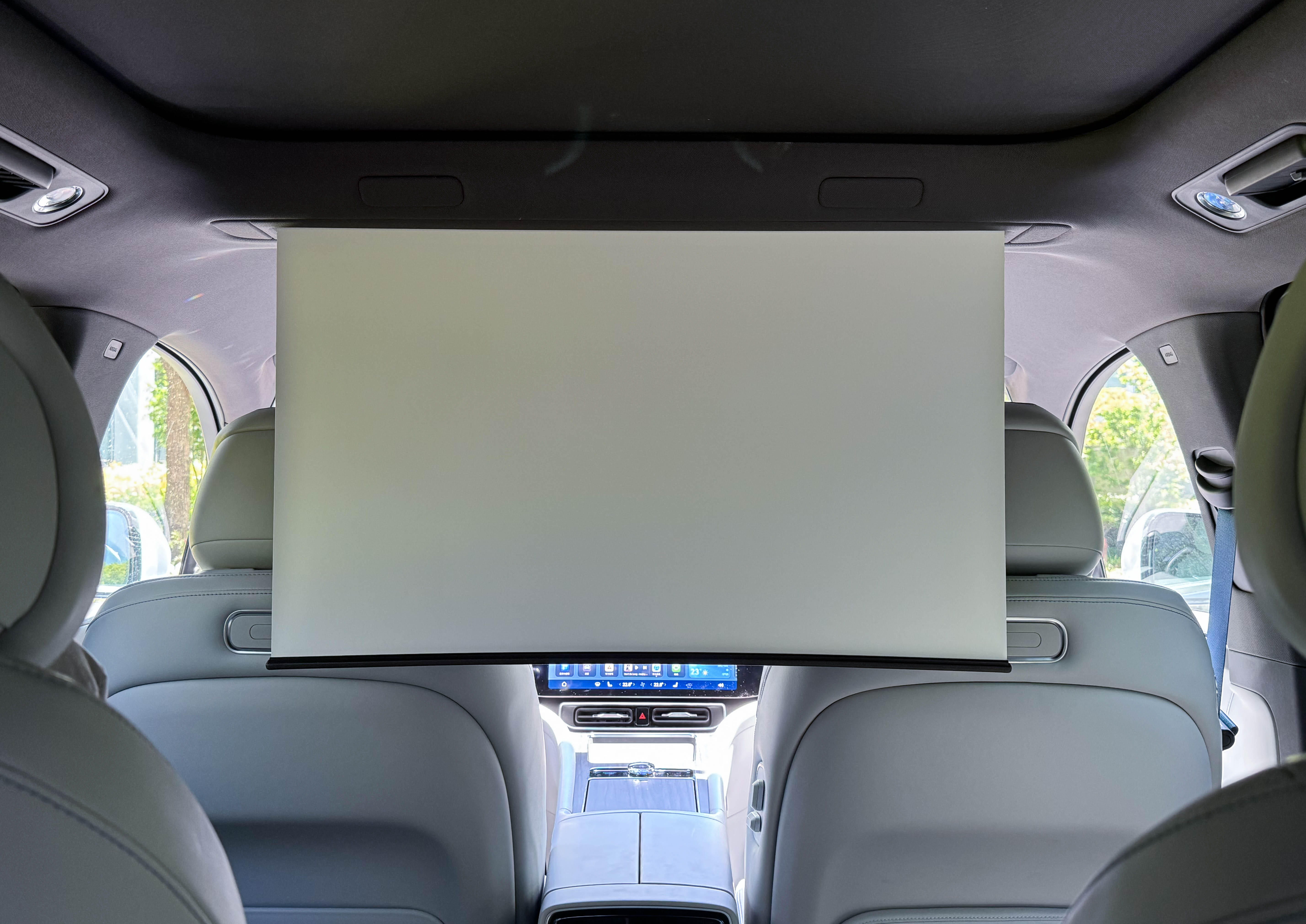
Another less user-friendly aspect: When the front seats are reclined too far back, the projector can’t be lowered. If the driver is tall or large, their driving needs may conflict with the entertainment needs of the rear passengers. I wonder which aspect would be more valued by most.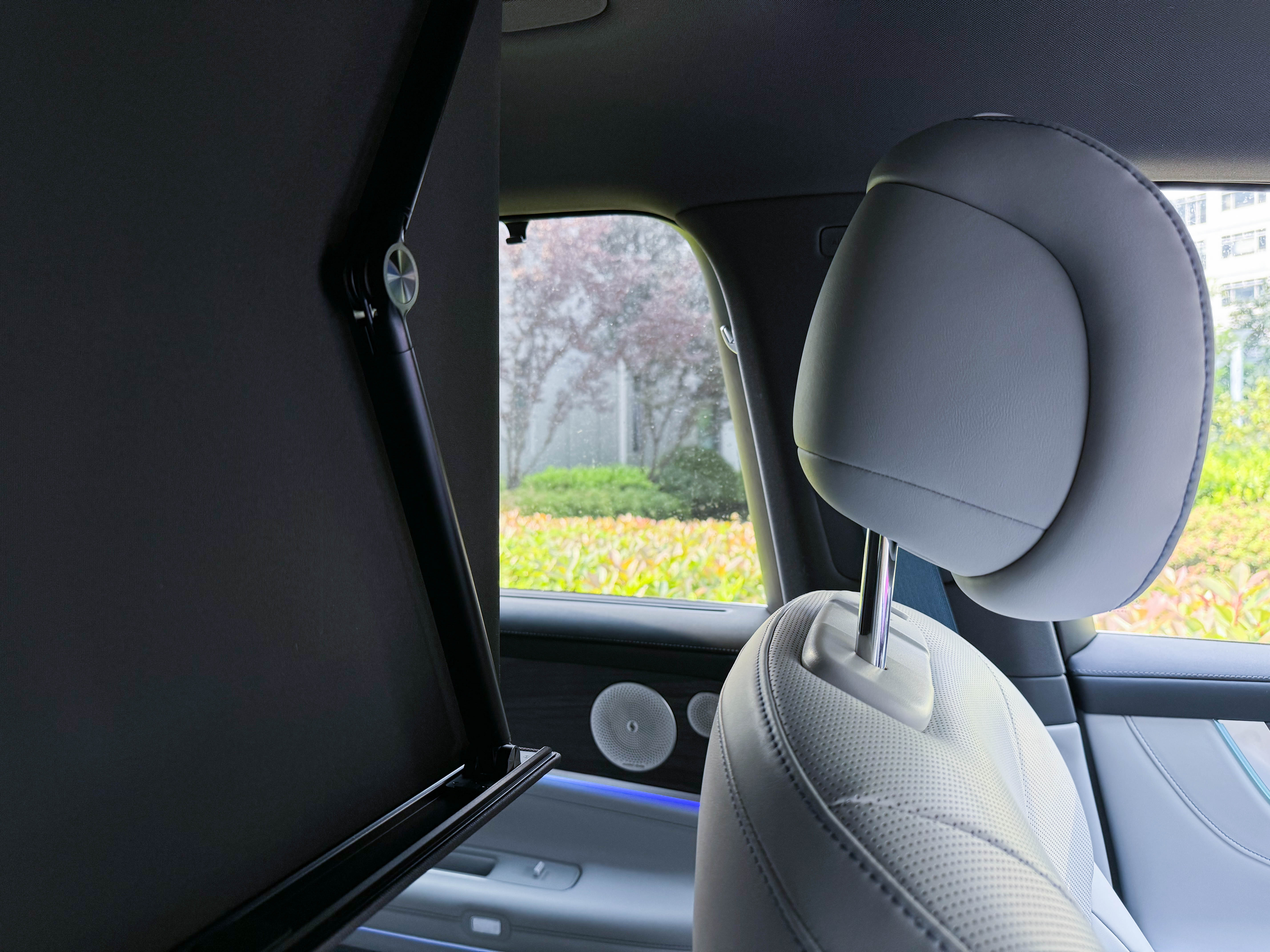
In conclusion, M9’s secondary driver entertainment experience is commendable, but the rear-projector feature, despite being creative, compromises practicality. The choice of this projection screen might just be a physical display of AITO’s prowess, hence, we do not recommend M9 owners to opt for this feature.
Mobile Ecosystem Experience
Many might have accustomed to the non-physical car key era, where everything is controlled via a mobile app. M9 scores 92.8 in this aspect, ranking No. 1 in the current leaderboard, proving its high adaptability.
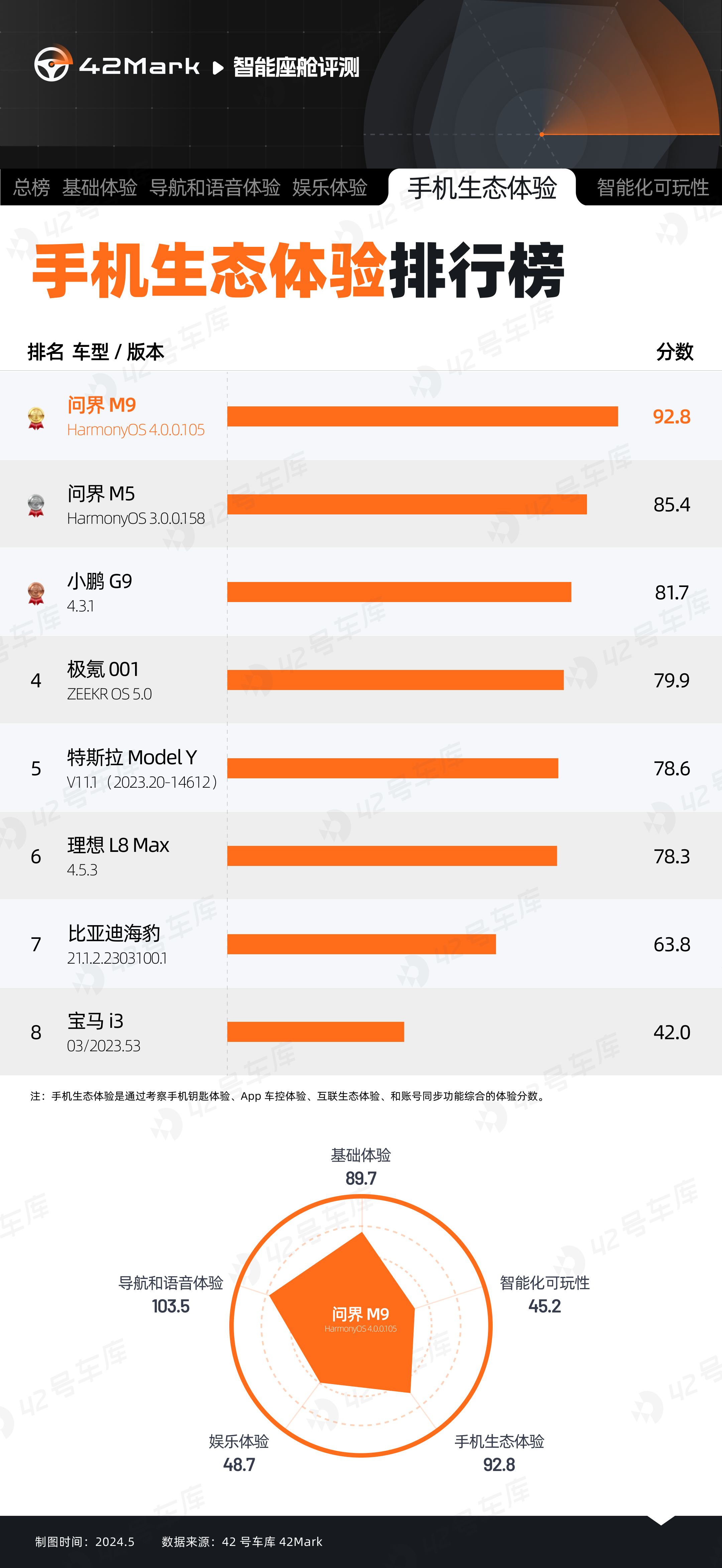
With basic vehicle control experiences like unlocking, air conditioning, window control, M9 does not fail to impress, delivering a near-seamless everyday experience with an average feedback delay as low as 0.49 seconds.
M9 automatically saves several pictures to record parking spots and environmental information. Combined with the light-flashing and honking functions, it effectively alleviates the trouble of finding the car in the parking lot. The Sentry Mode is supported too, but only on and off, without the option for remote real-time viewing.
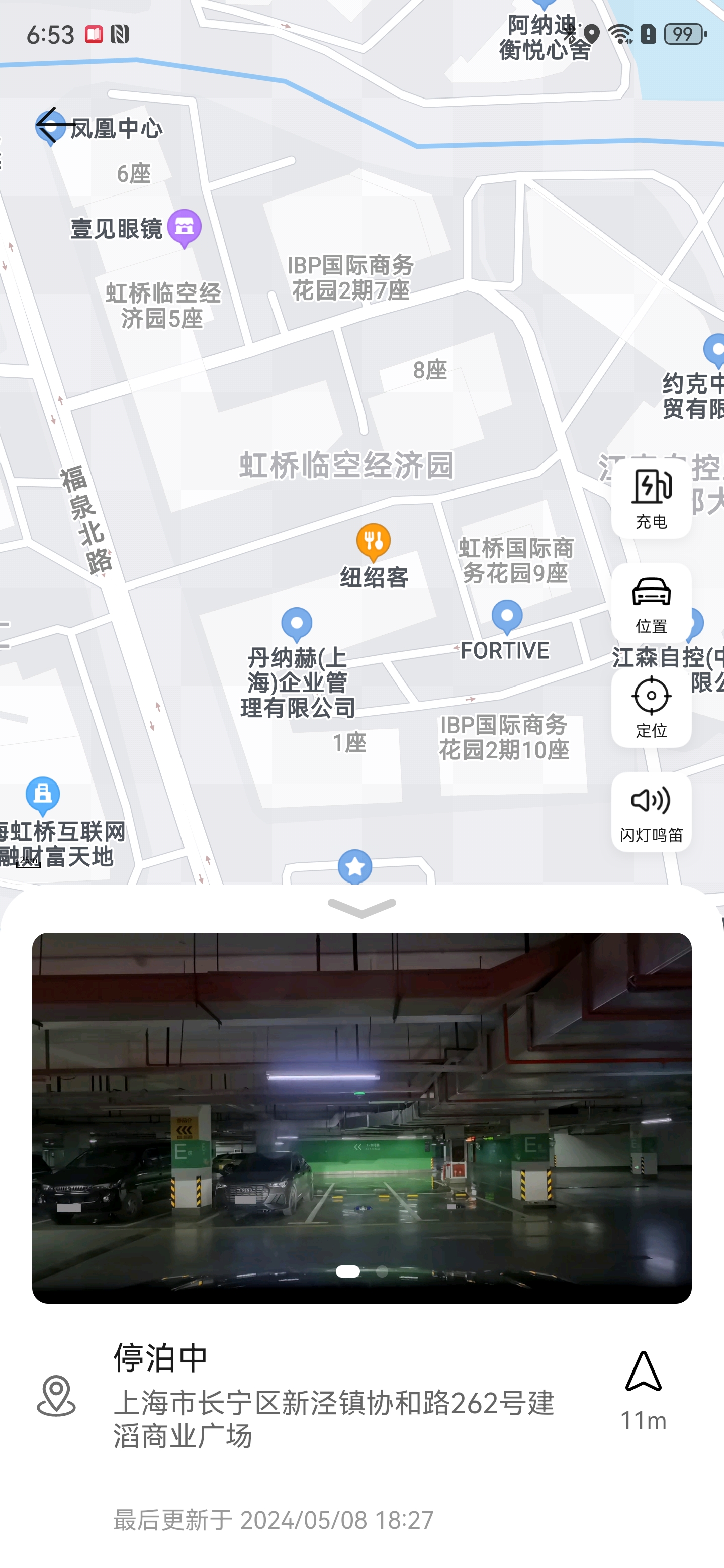
If you have a Huawei mobile with the Harmony system, you can enjoy a more immersive mobile-to-screen casting experience than just a basic projection from the Harmony-dedicated Super Desktop. The current implementation is operating on a whitelist mechanism that supports some music apps, navigate maps, and a few games. Although, the resolution and control delay leave something to be desired. Using wireless charging and the Super Desktop simultaneously may cause slight phone heating, but within acceptable levels.
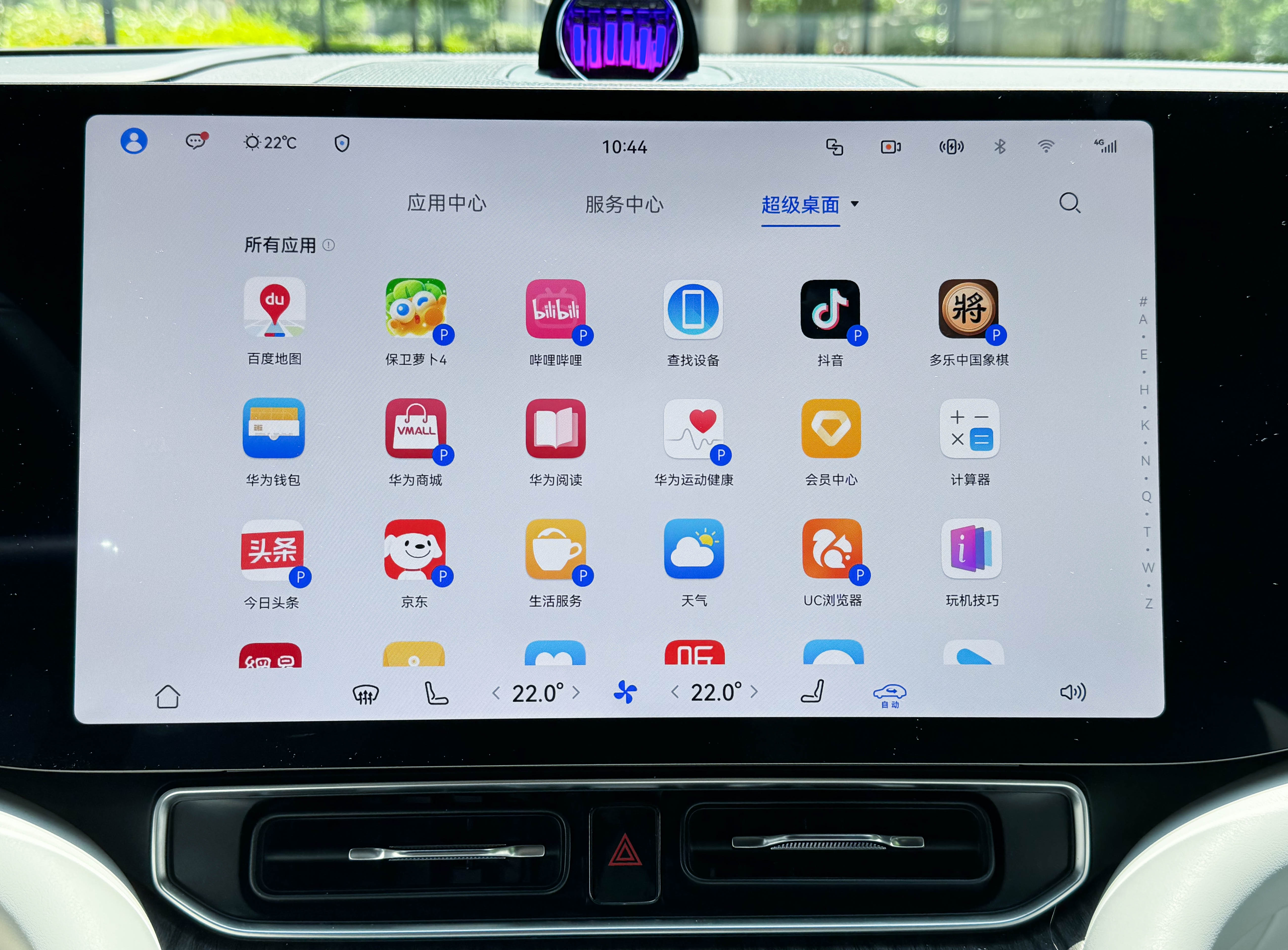
Considering this, the Harmony ecosystem would be the optimal choice. As the importance of car-mobile connection becomes increasingly emphasized by many manufacturers, this aspect’s weight in our 42Mark may also escalate.
Intelligent Playability
Beyond the cabin experiences, we at 42Mark also focus on a vehicle’s intelligent playability, broadening the play field. M9 scored 45.2, ranking No. 2 in the current leaderboard.
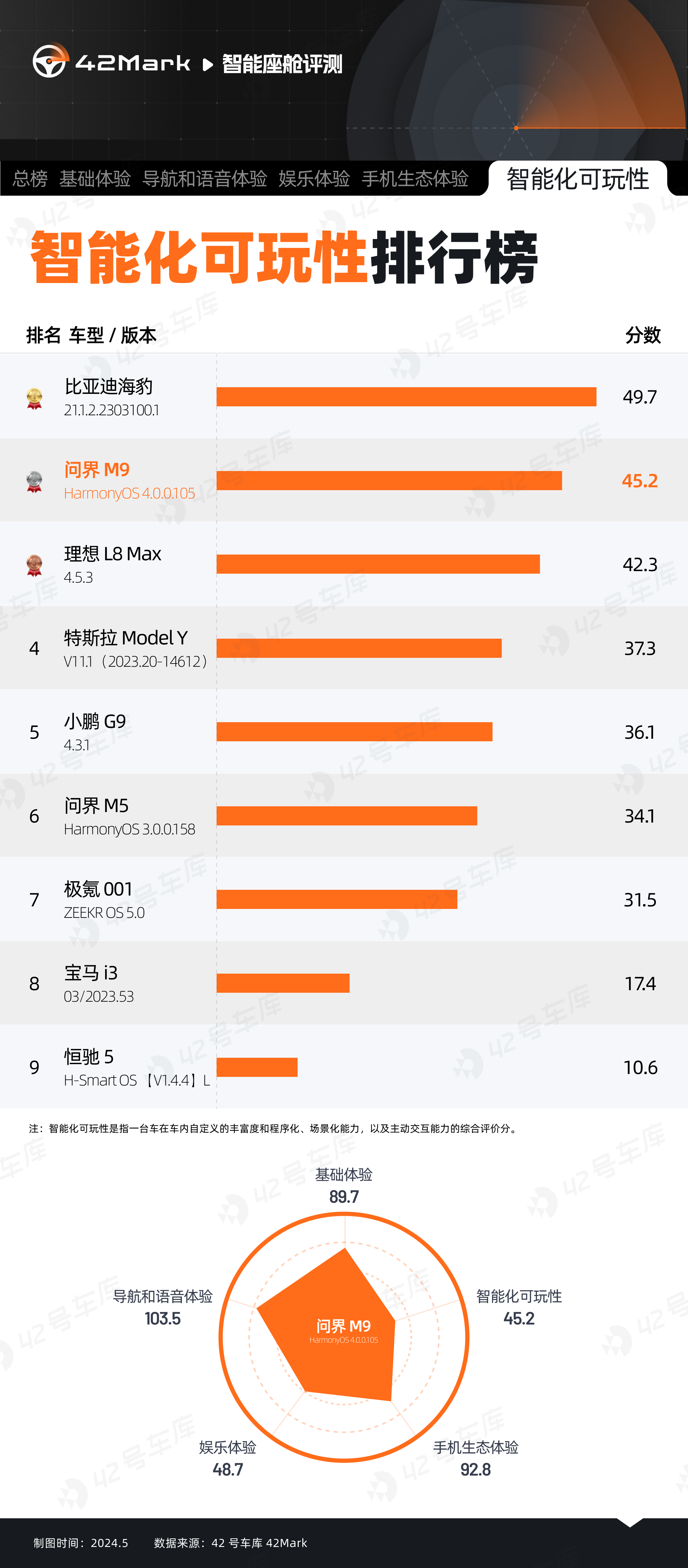 In terms of customization, the M9 offers selectable music modes and simple EQ adjustments for its sound system. Although it lacks high-precision tuning, the M9’s original sound system is already impressively stunning. Voice support includes recording and voice switching, and Xiao Yi’s tone can be customized with four voice choices.
In terms of customization, the M9 offers selectable music modes and simple EQ adjustments for its sound system. Although it lacks high-precision tuning, the M9’s original sound system is already impressively stunning. Voice support includes recording and voice switching, and Xiao Yi’s tone can be customized with four voice choices.
Let me highlight a few more features: The color of M9’s central control system can be customized, providing more than just simple daytime and nighttime modes. It supports voice assistant activation for reminders and offers features like a rest mode and care mode for special occasions. Custom programming functions are unfortunately missing, leaving us wondering how much this feature is anticipated by the greater HarmonyOS vehicle user base.
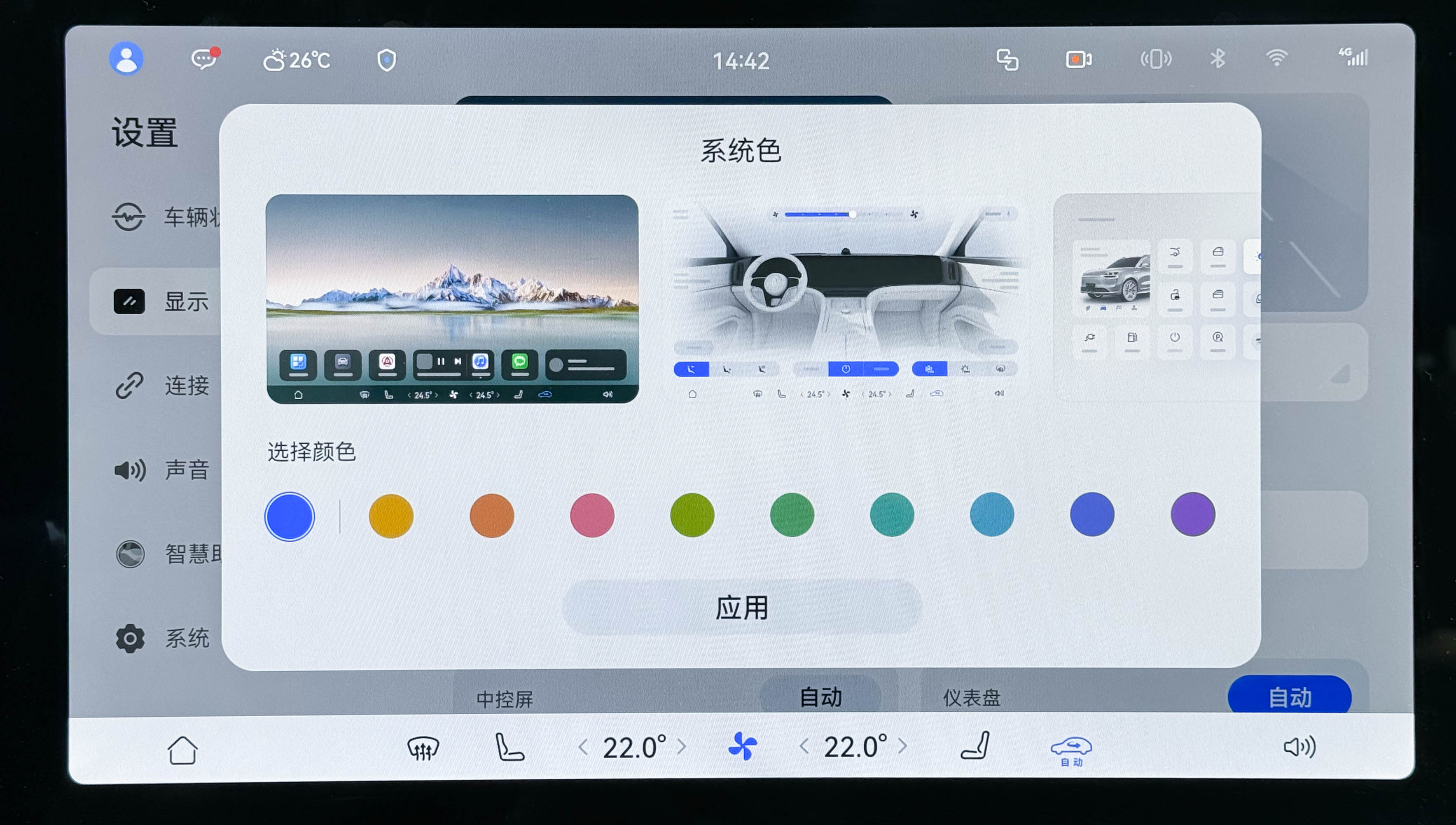
That concludes our AITO M9 cockpit test review. Congratulations to the M9 for its record-breaking score of 81.3 points, surpassing the LI L8 and securing the first place in the current cockpit ranking.
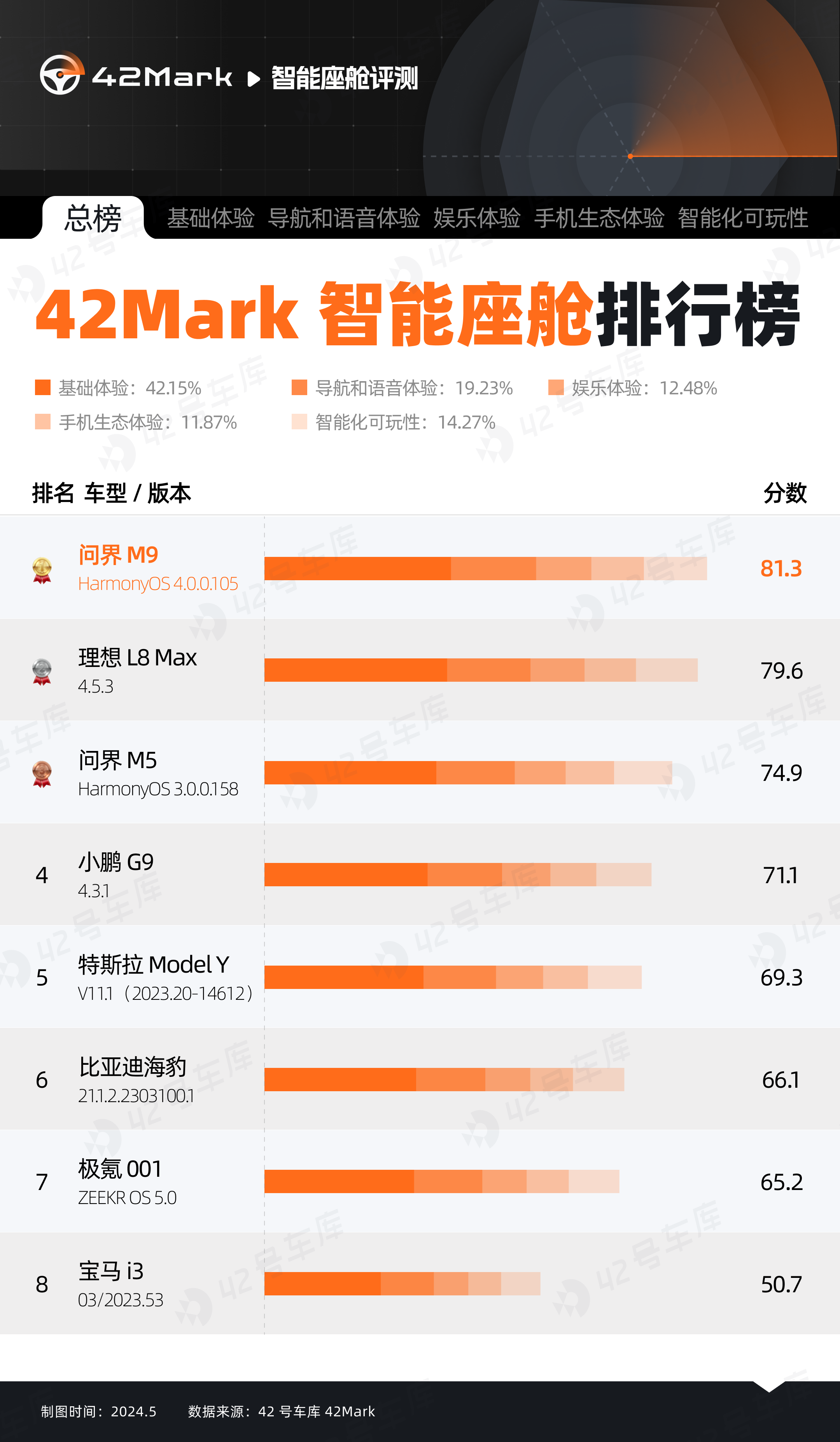
In Conclusion
The M9’s cockpit level, supported by the cross-platform HarmonyOS, holds a very high lower limit in its experience, resulting in no evident weaknesses in general. The HarmonyOS 4 car machine, after several years of iterations, offers satisfactory experiences in many details which ranks M9 first in terms of overall score.
As previously mentioned, the 42Mark cockpit review takes place largely independent of hardware with less apparent perception, showing us that even without mainstream chips like the 8295, the current user experience of the M9 still ranks among the best. This also reaffirms our belief that the importance of smart cockpits now lies less with hardware accumulation which may not always improve the experience—as exemplified by the projector screen mentioned earlier.
In our evaluation, M9 lived up to the title of ‘Leader’, continuing to stand out in the car machine experience brought by Huawei, and we expect the M9’s competitiveness to further increase with subsequent OTAs. Stay tuned as 42Mark continues to publish more cockpit reviews.
This article is a translation by AI of a Chinese report from 42HOW. If you have any questions about it, please email bd@42how.com.
